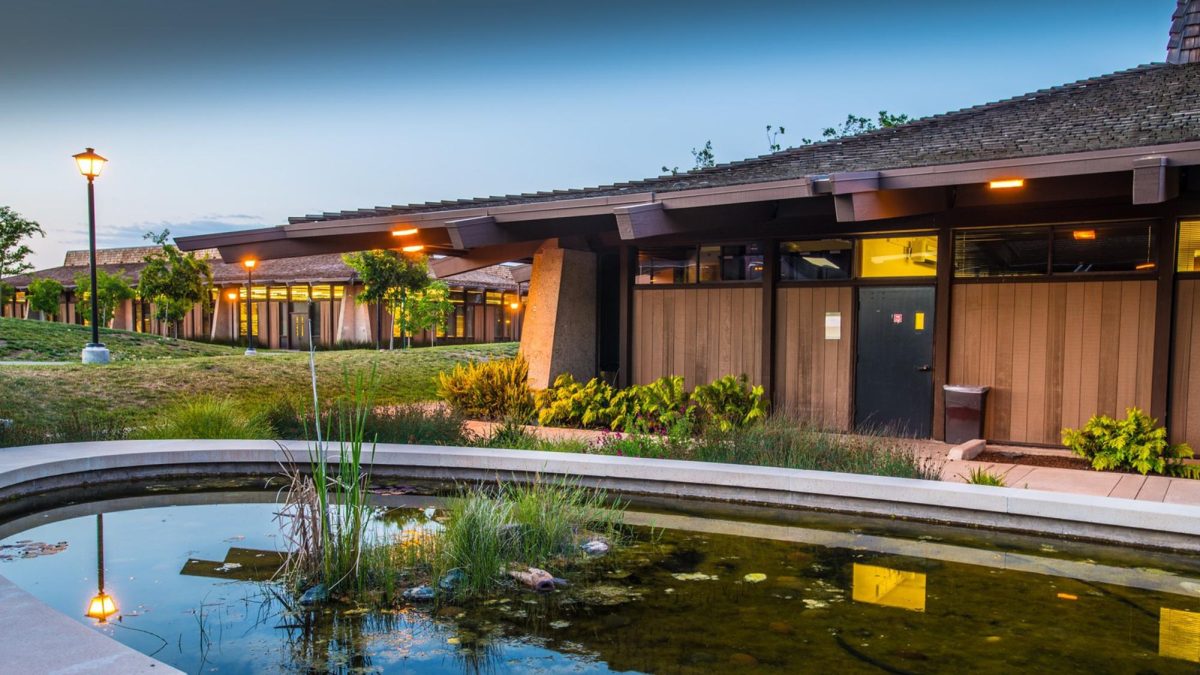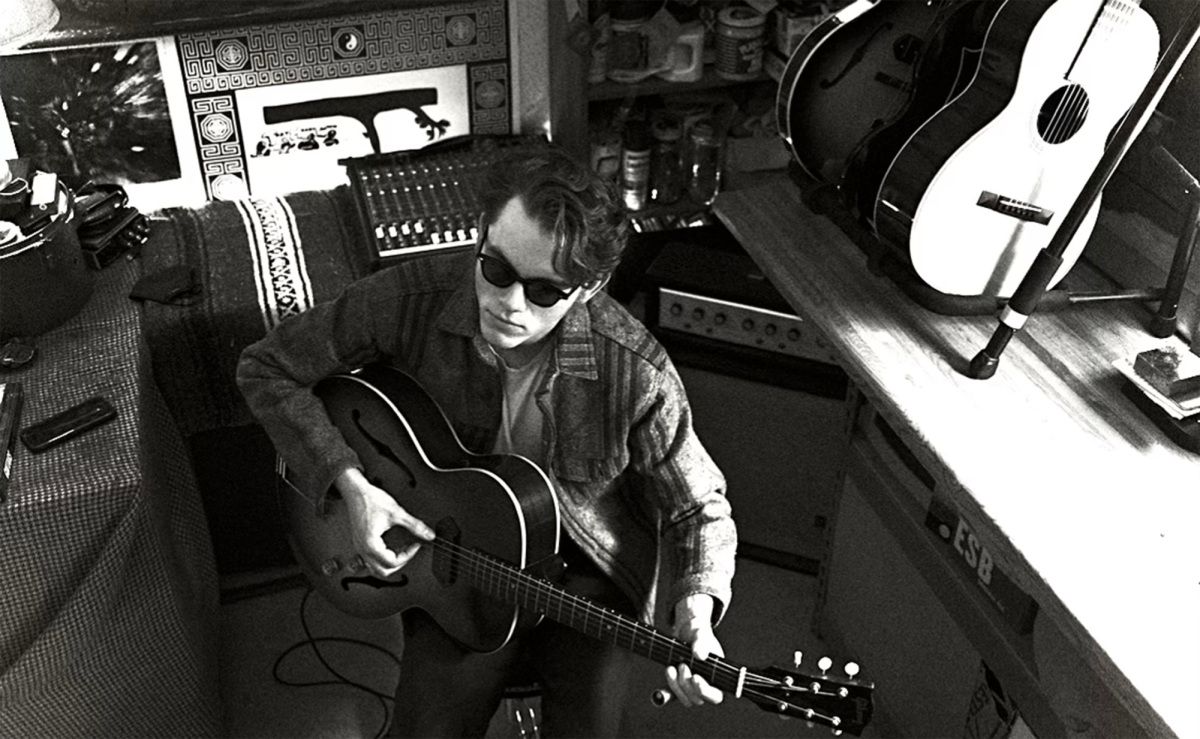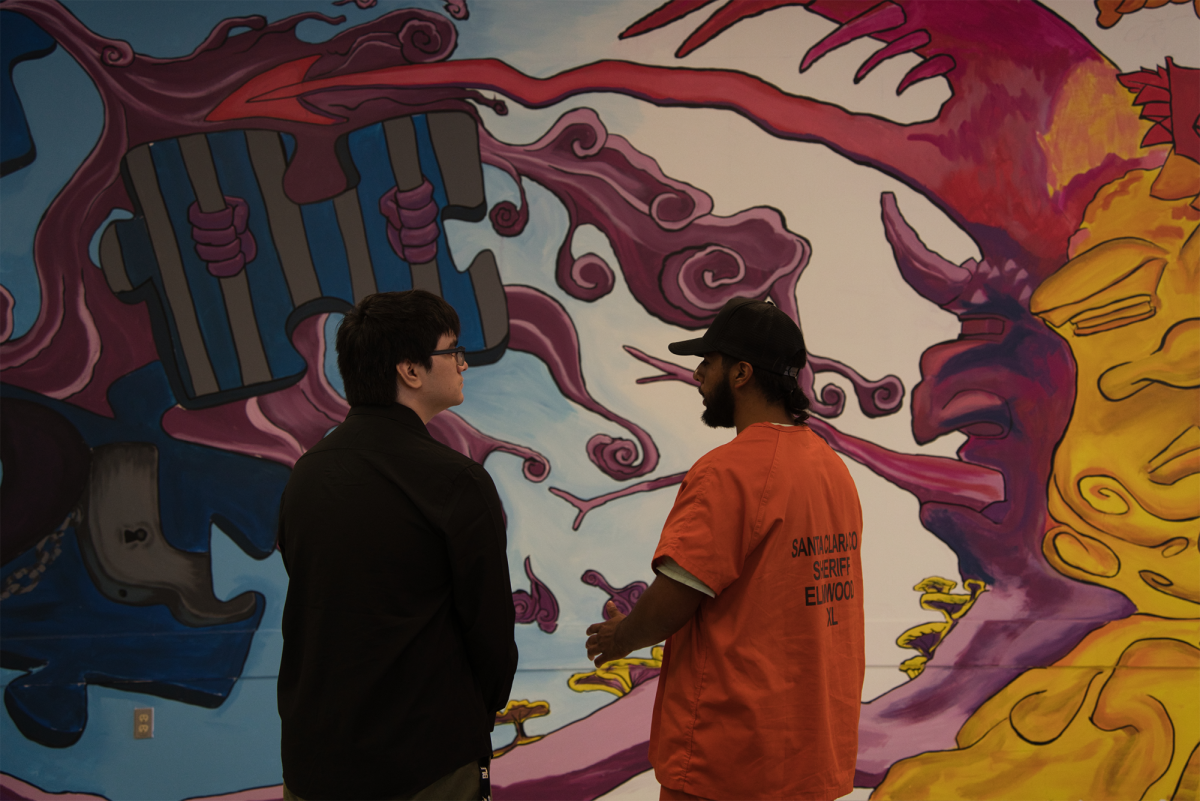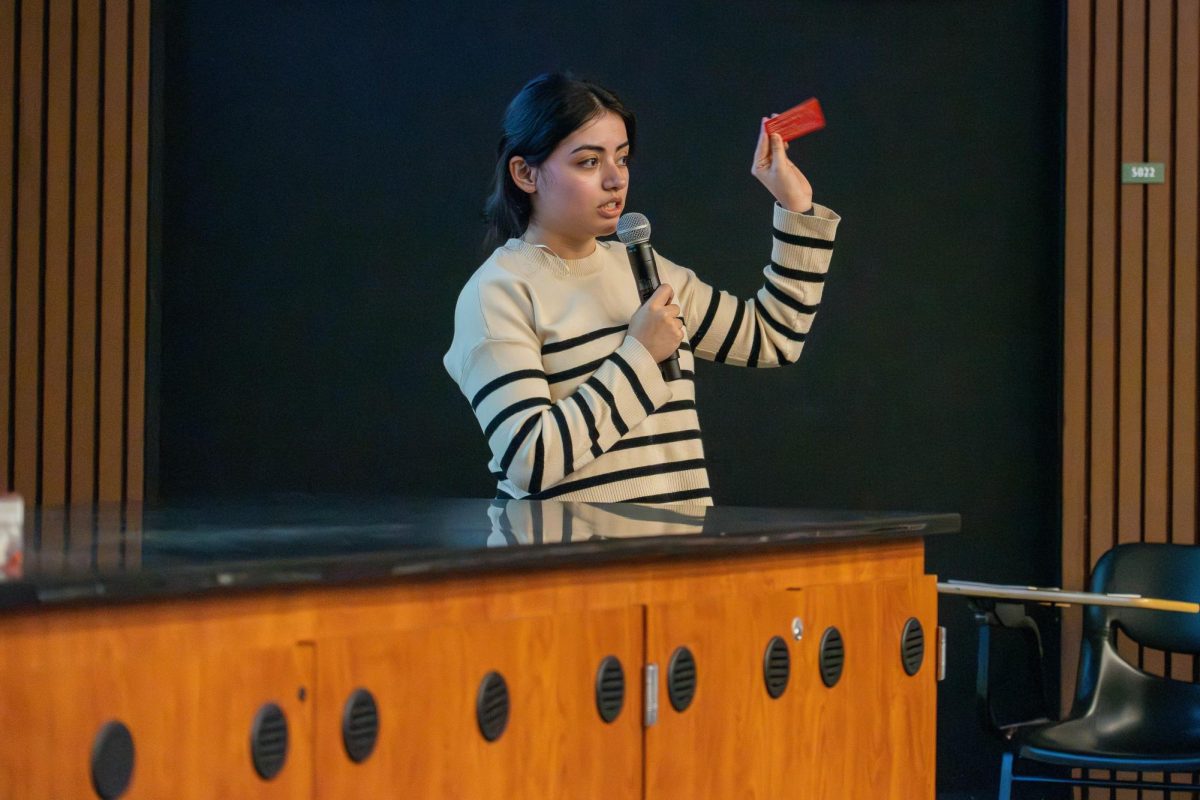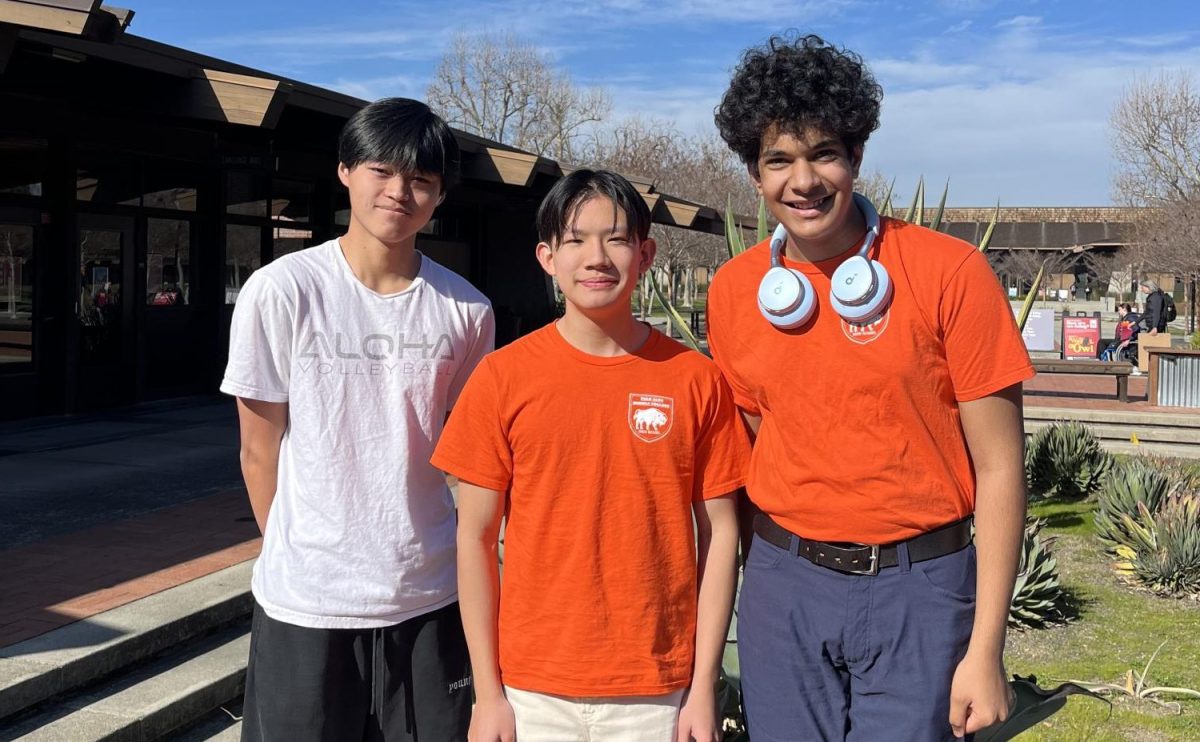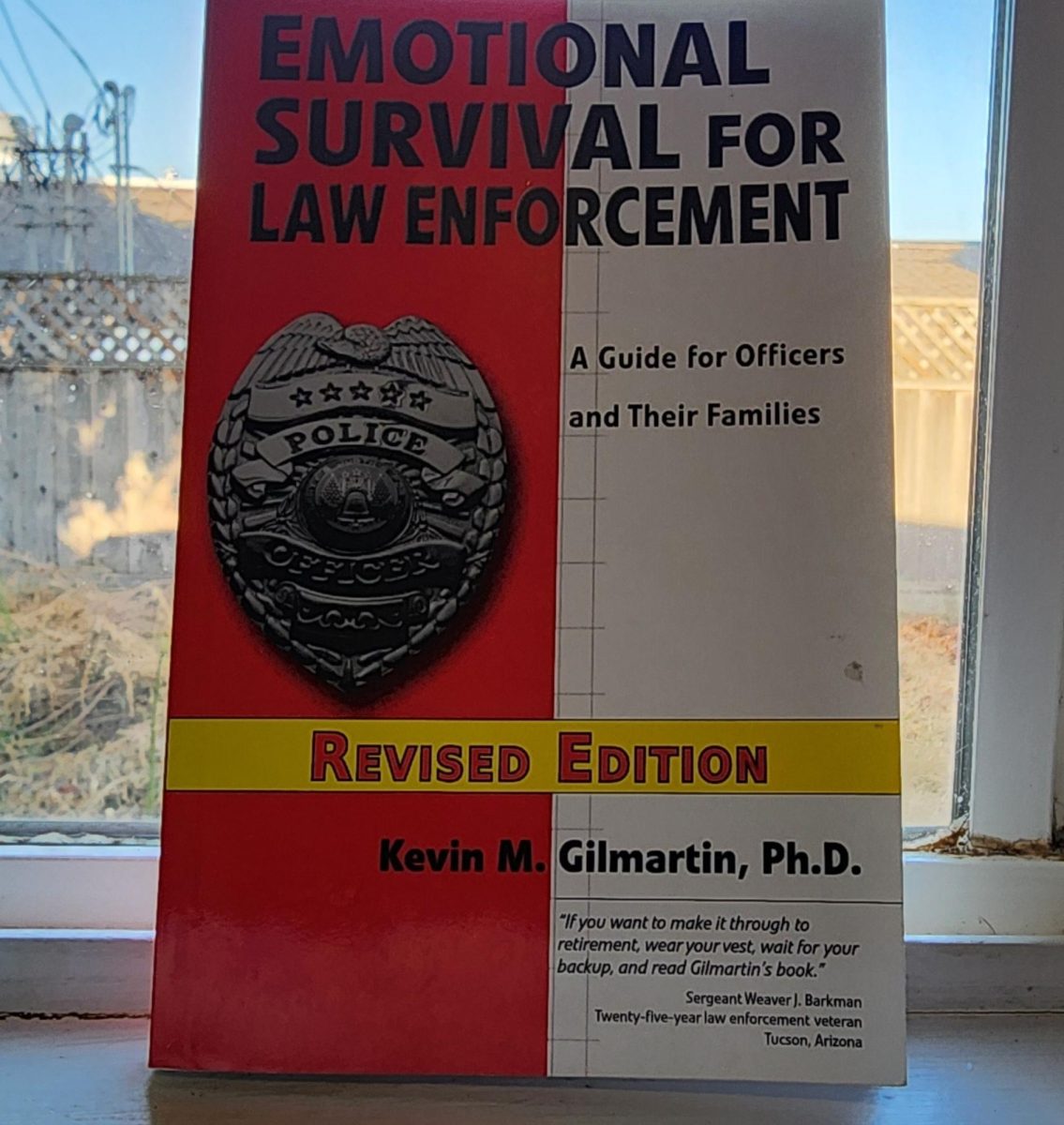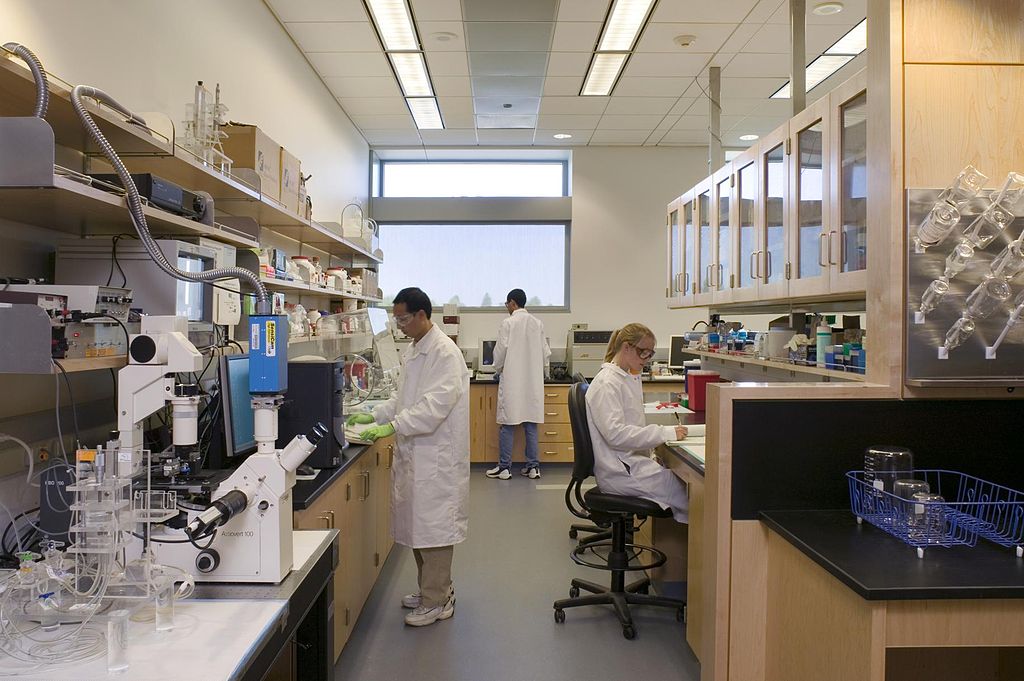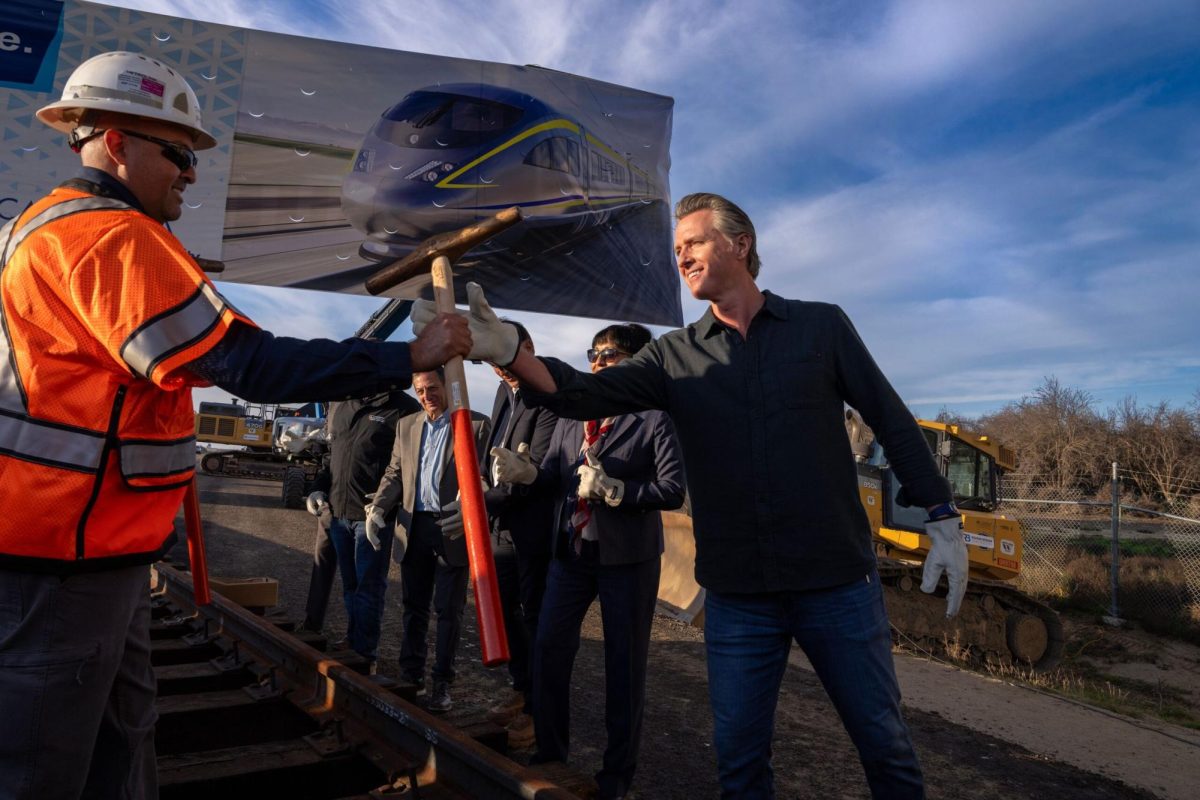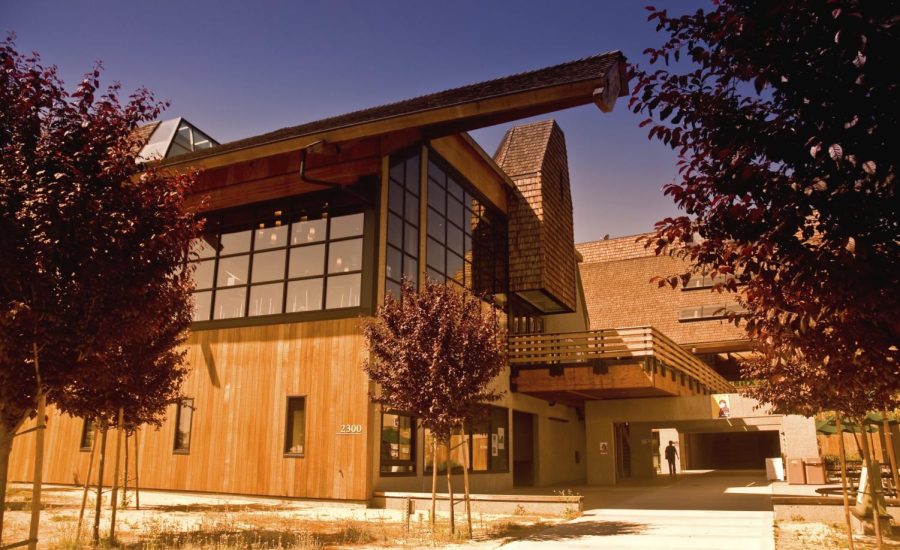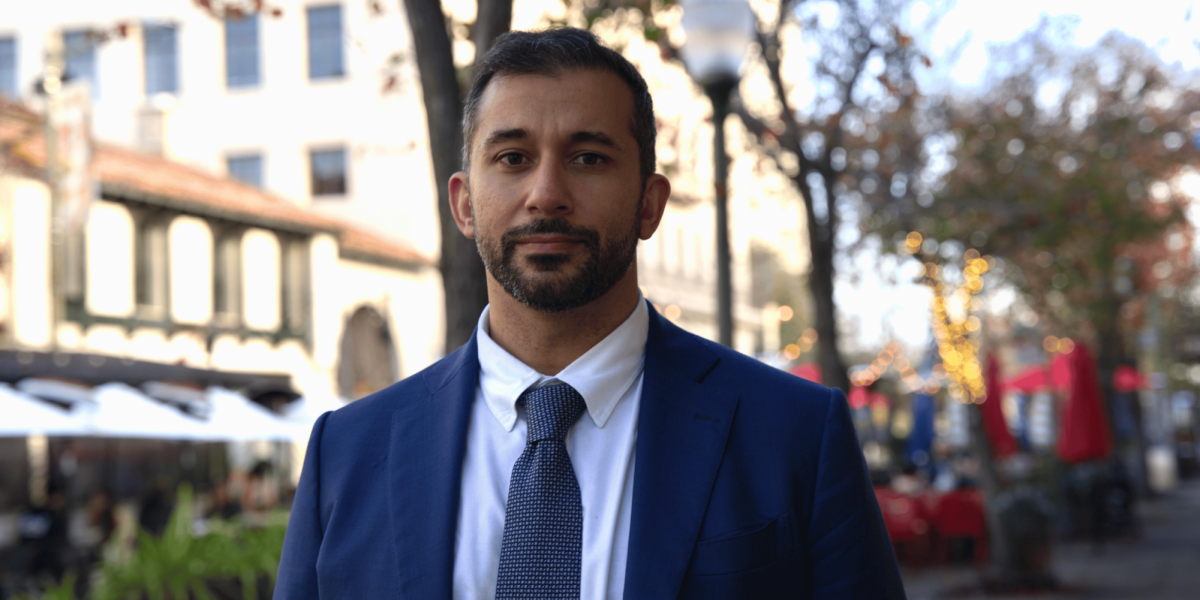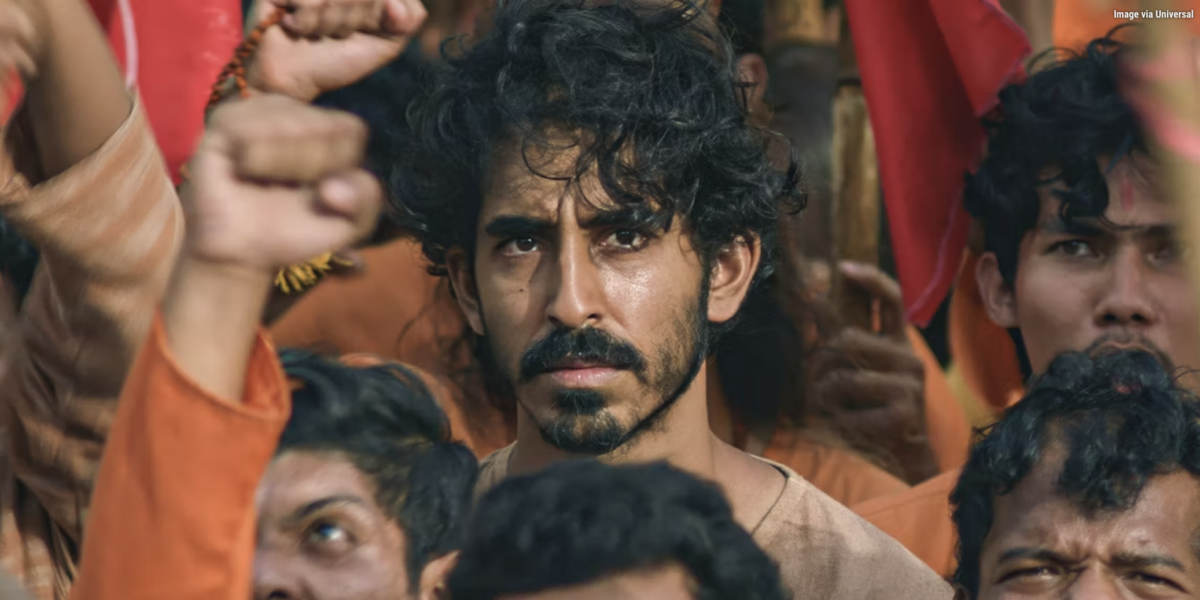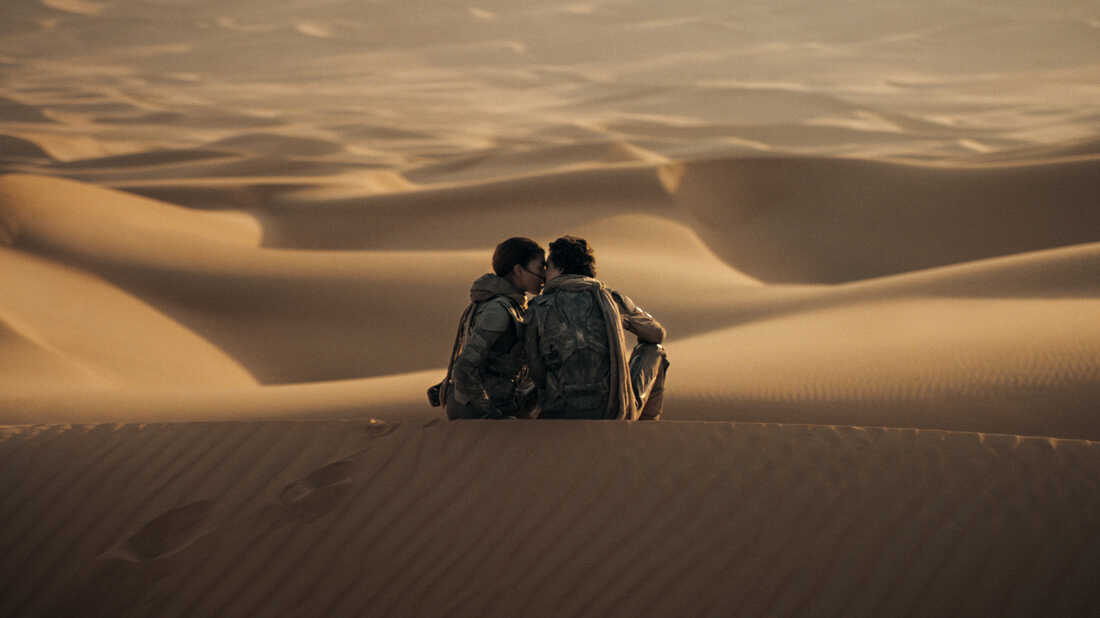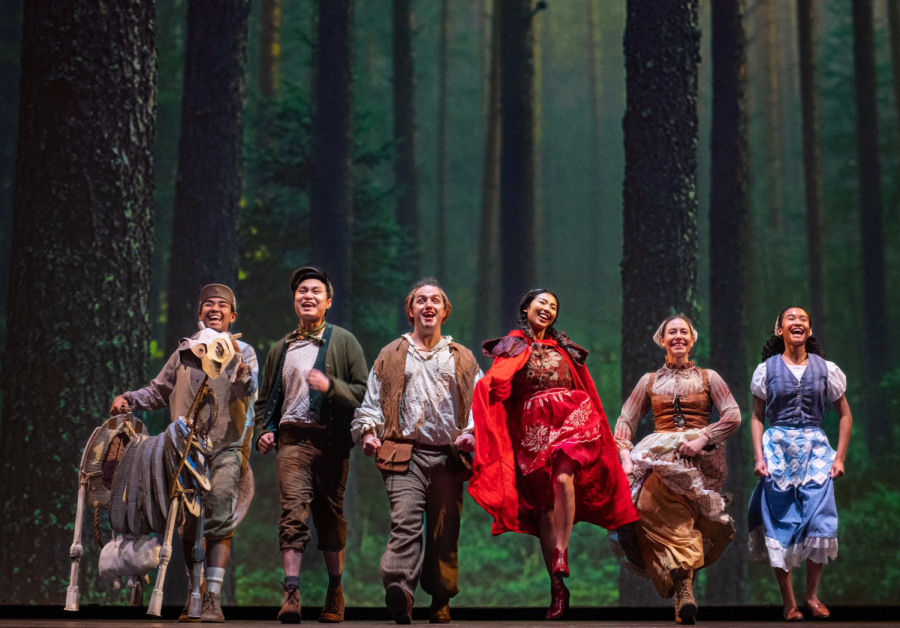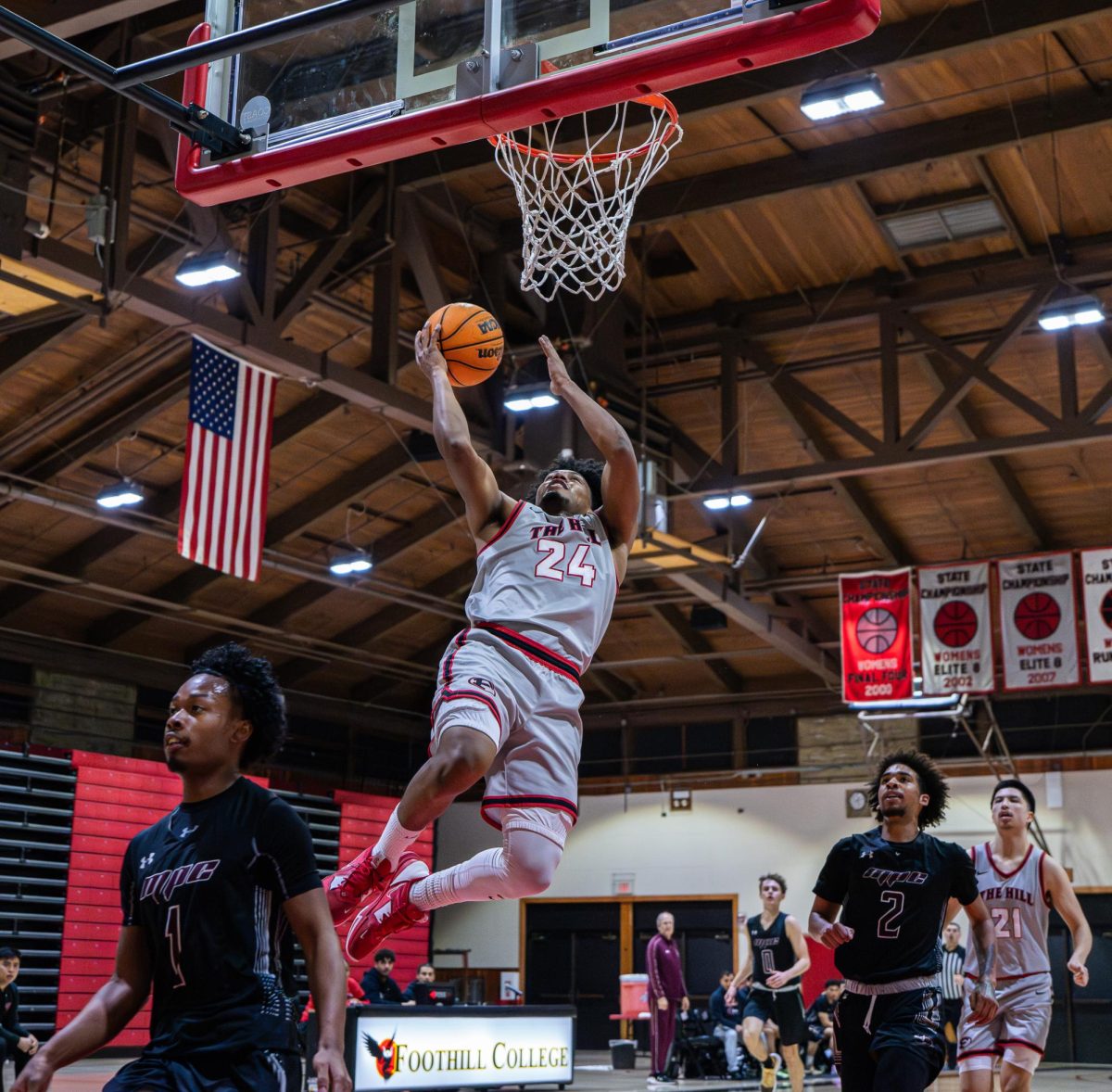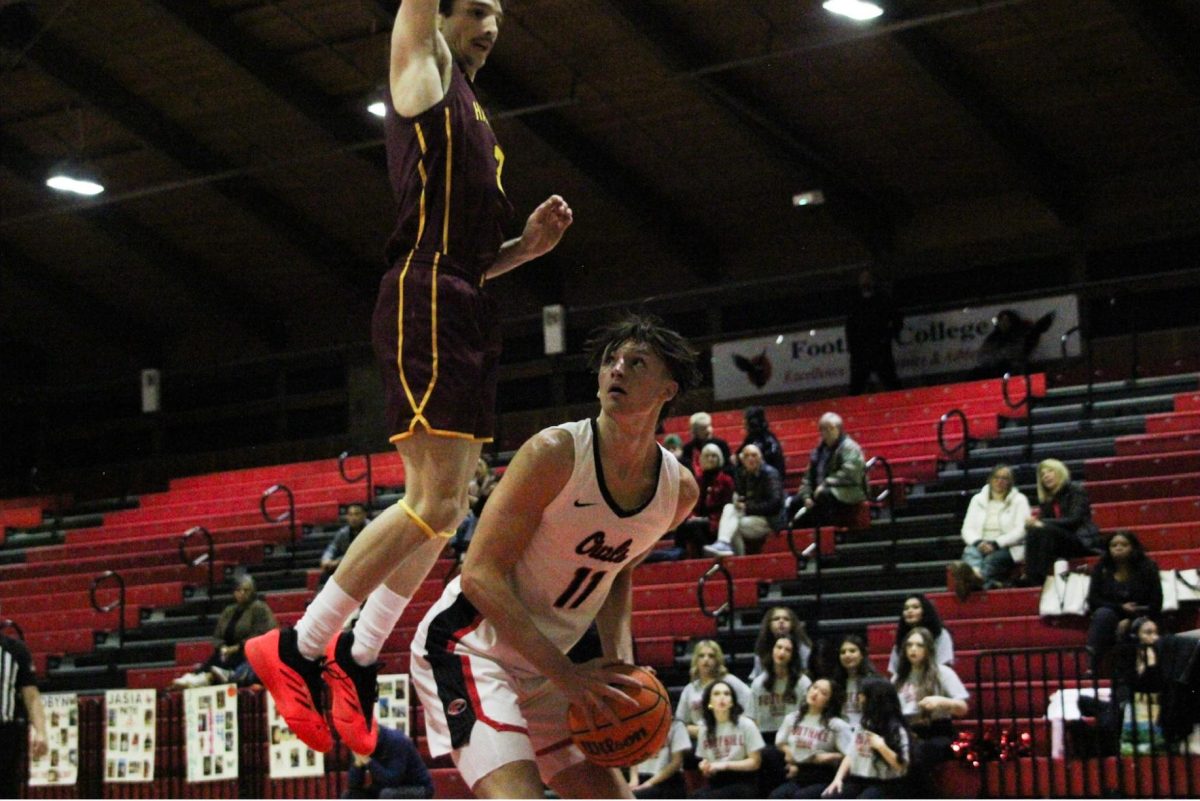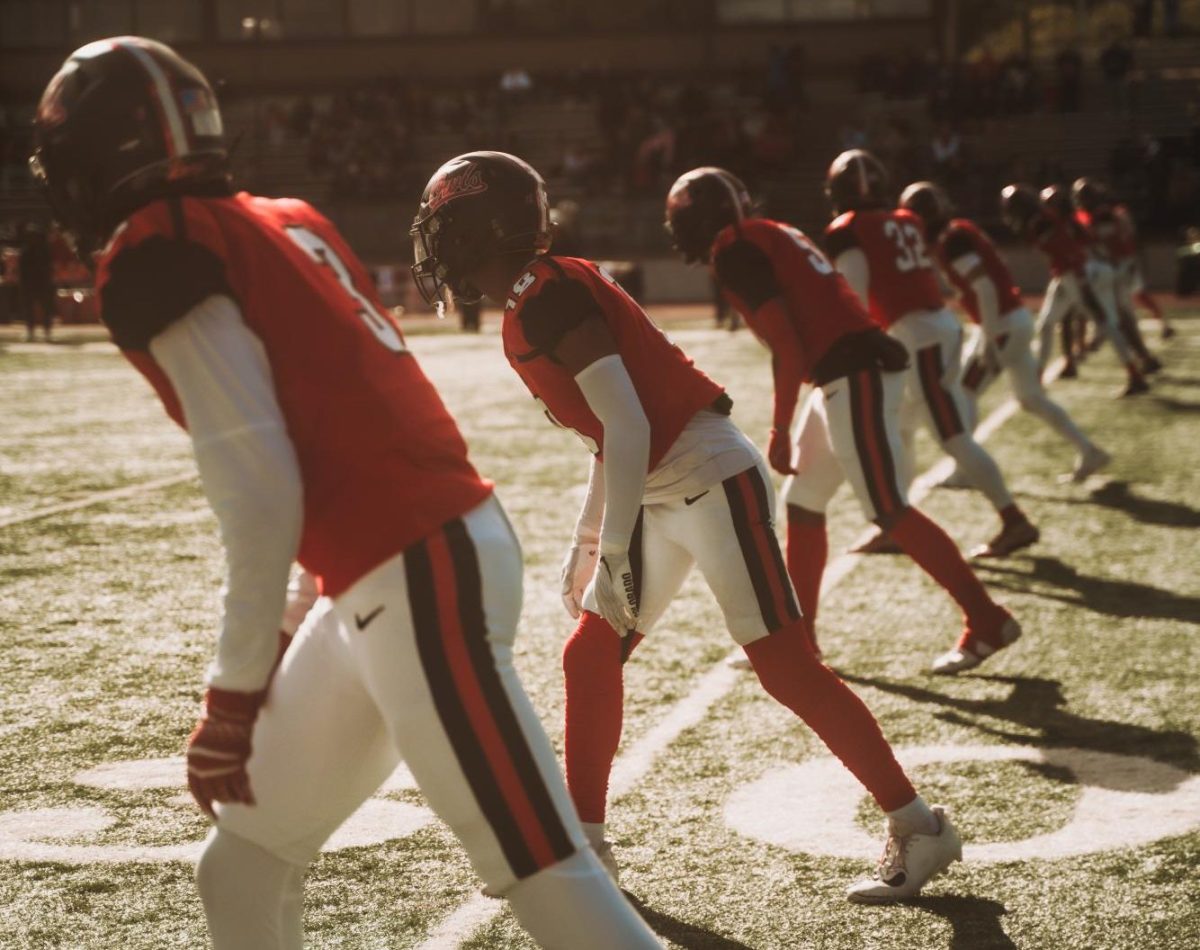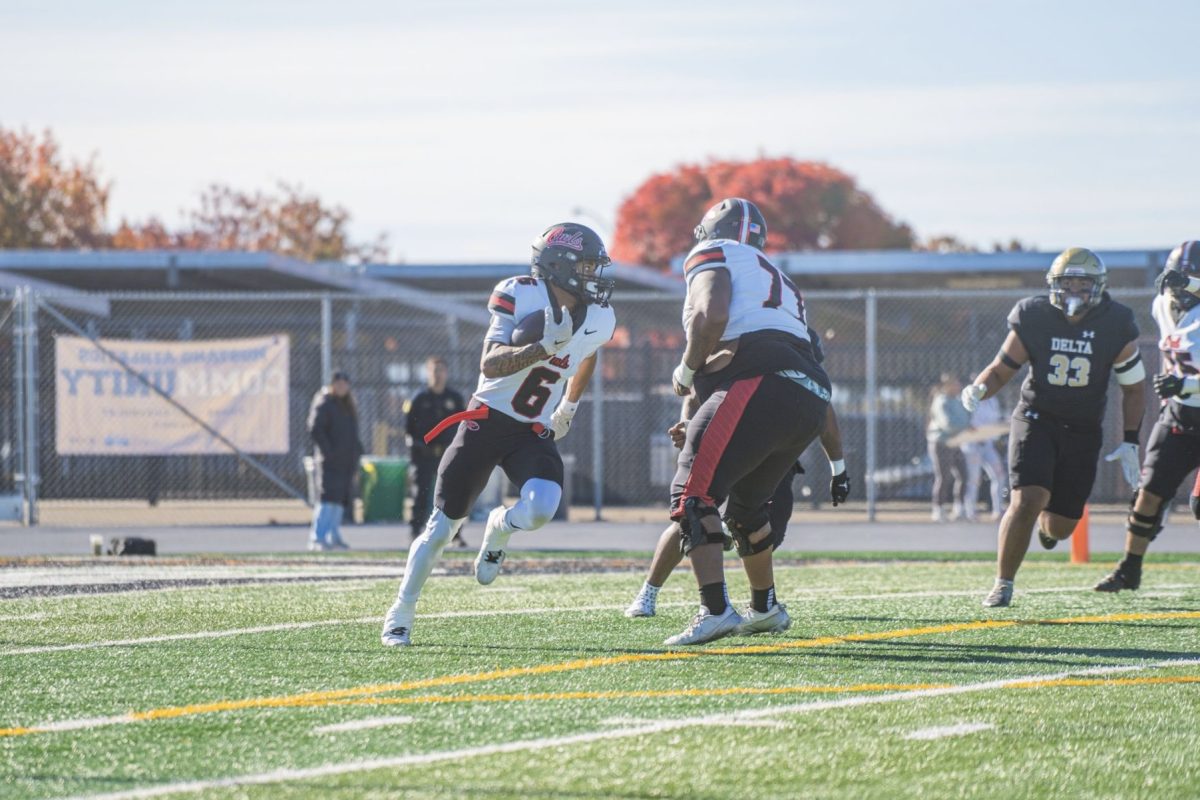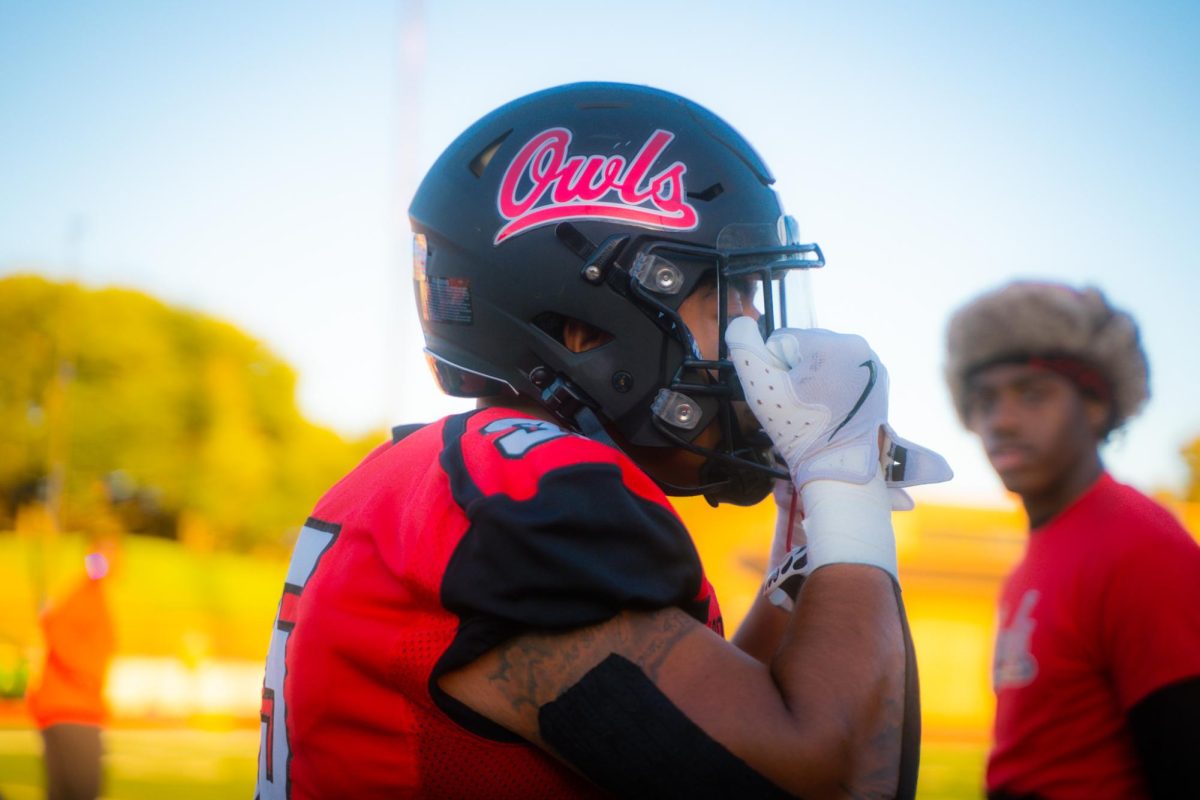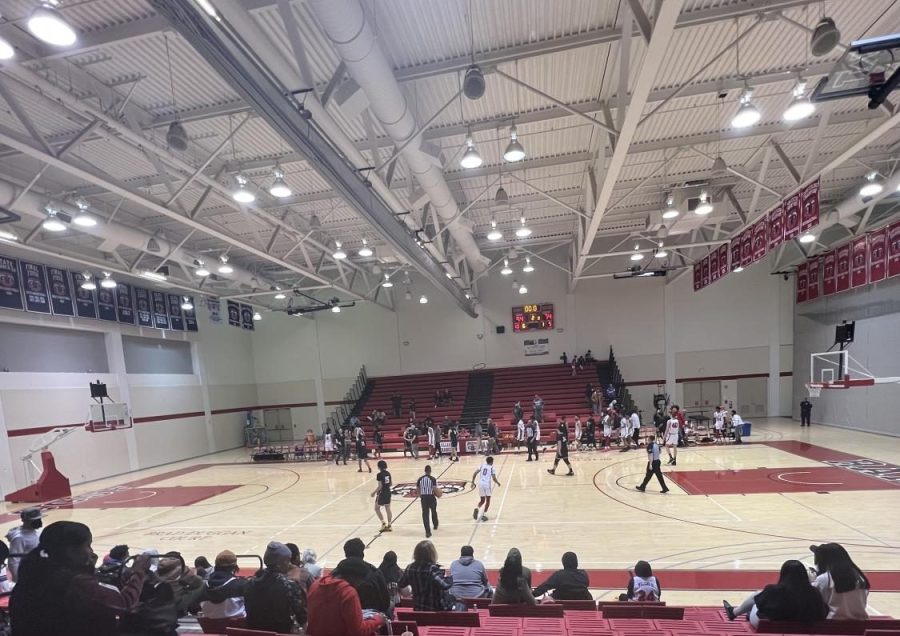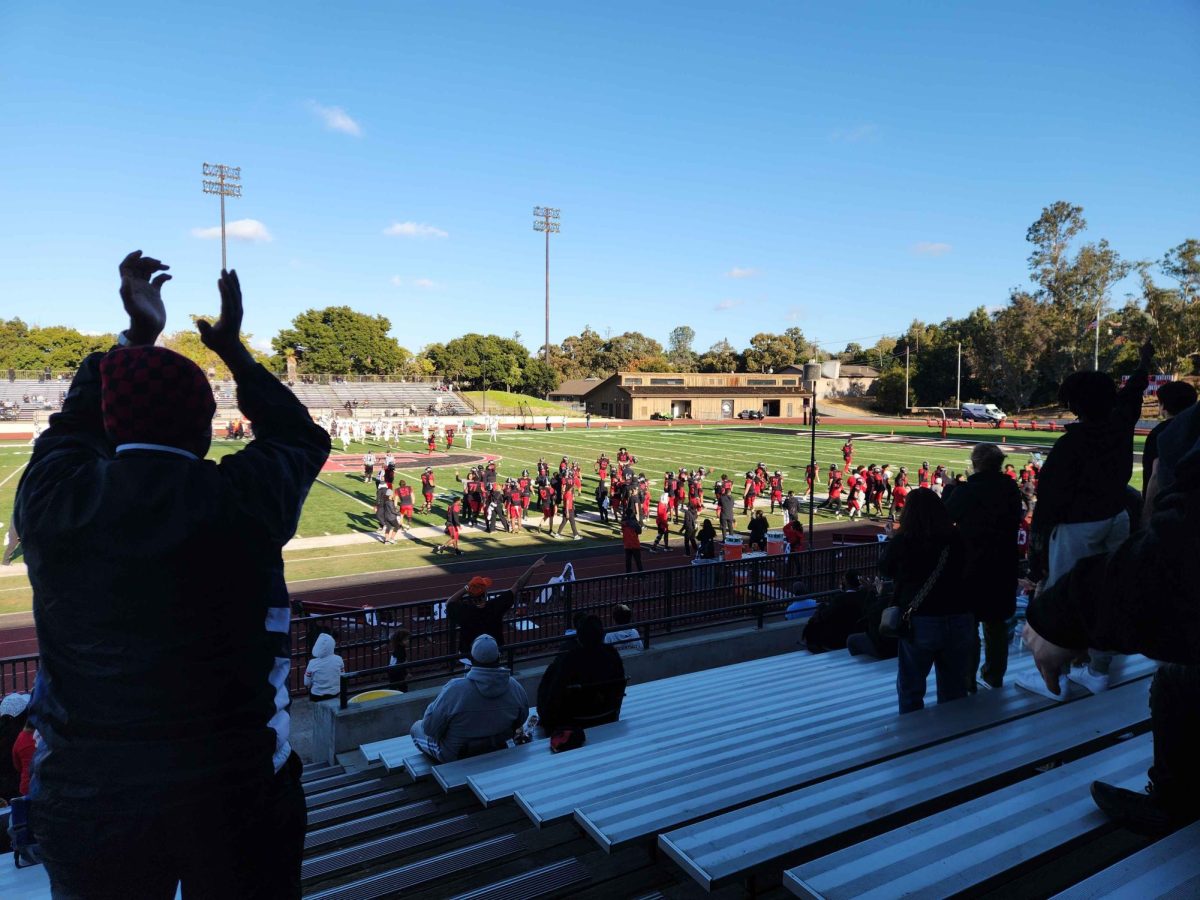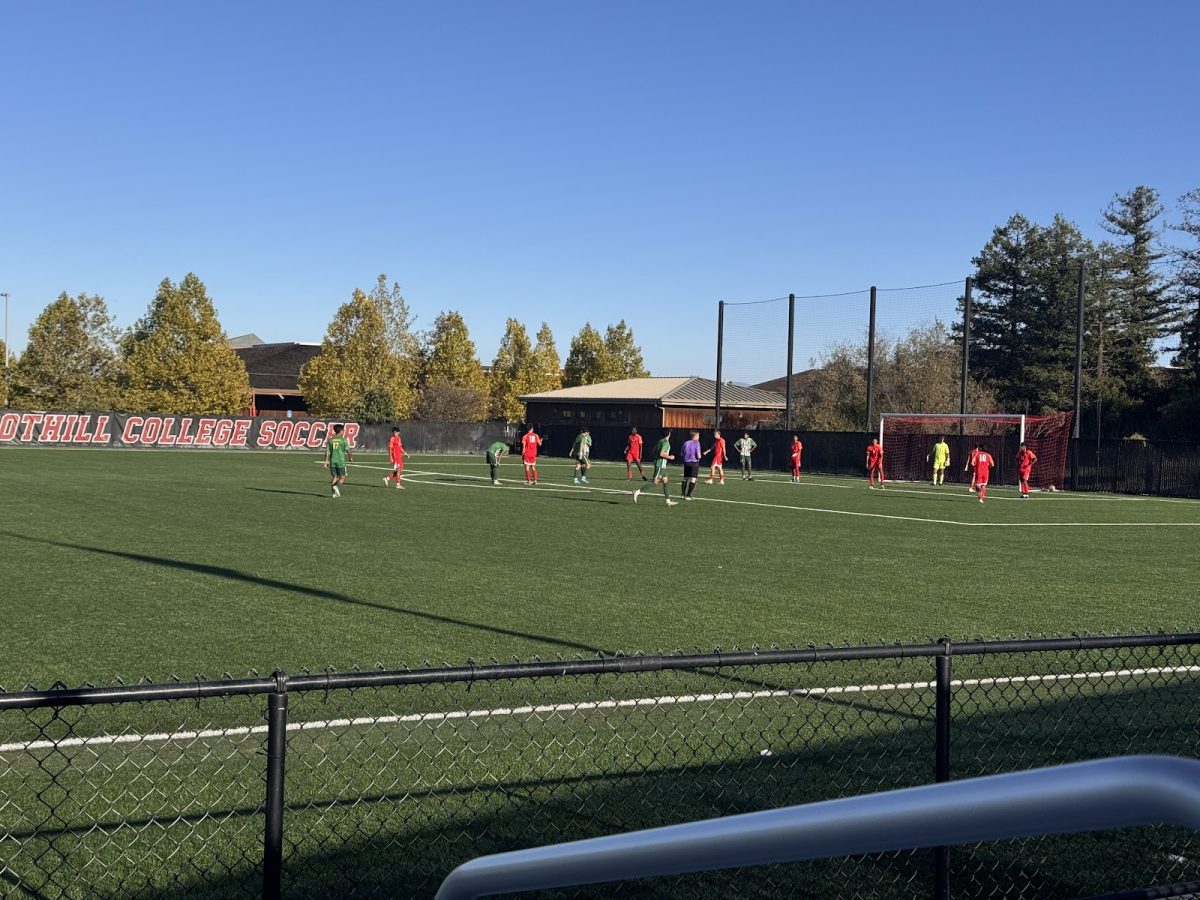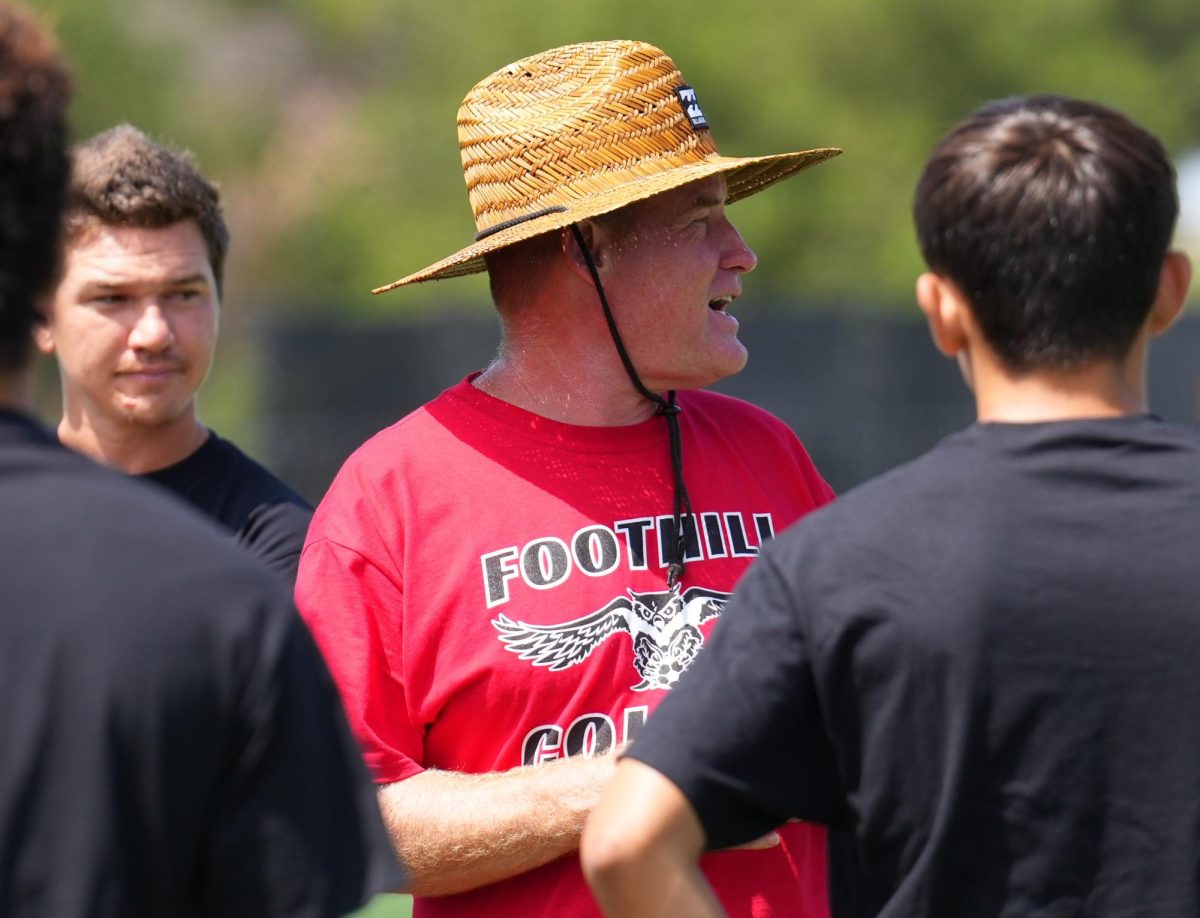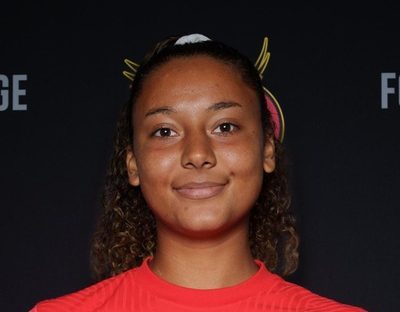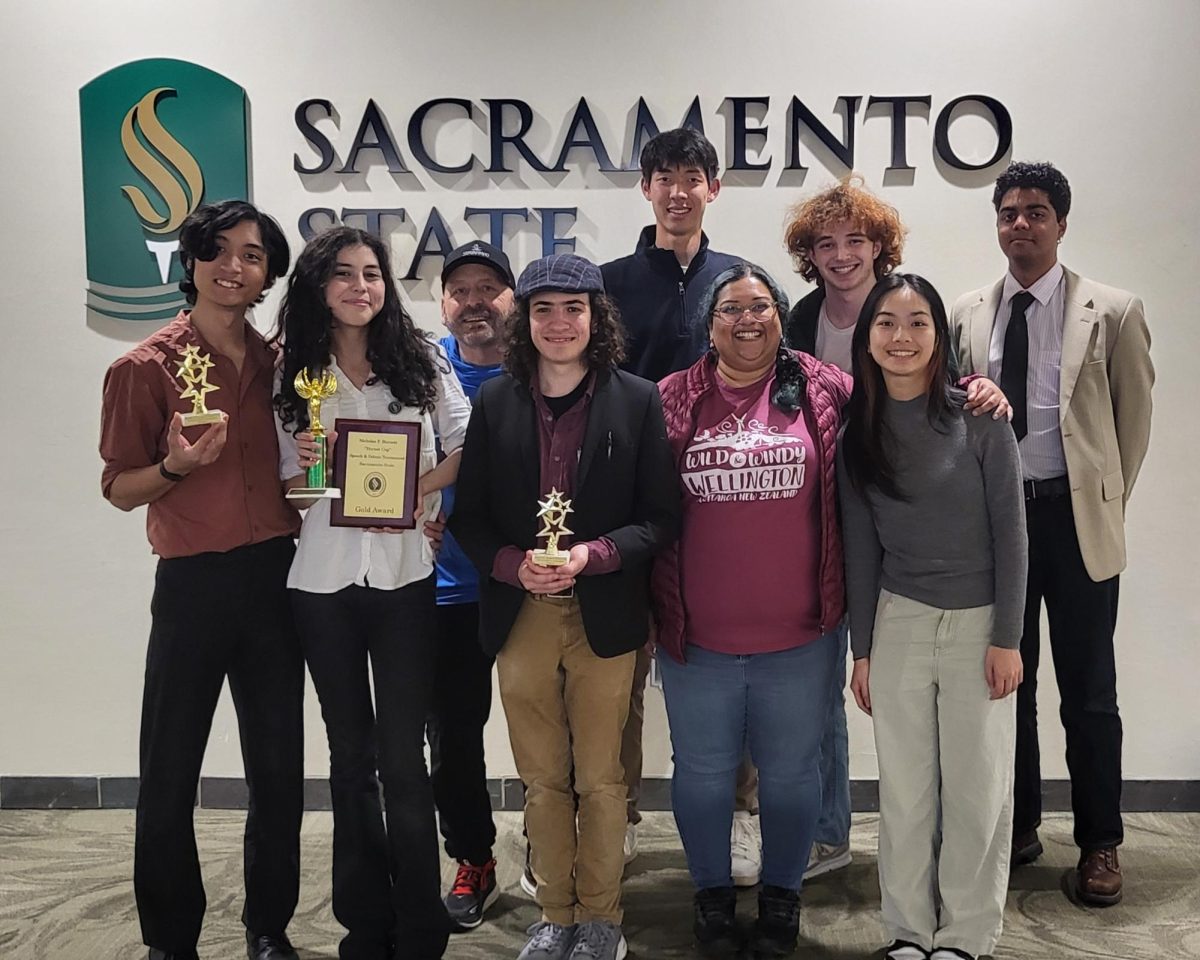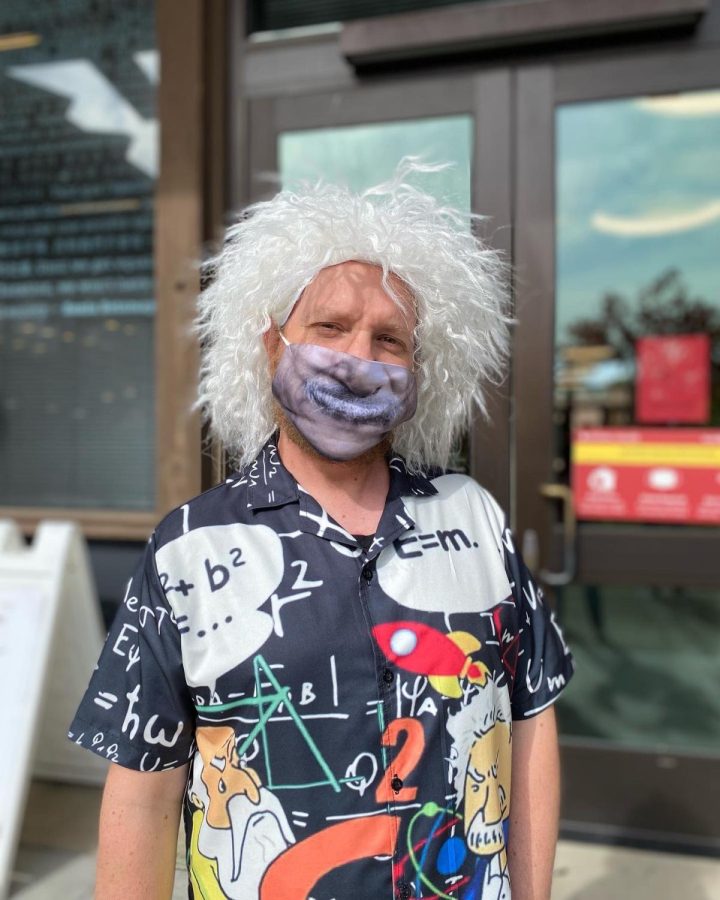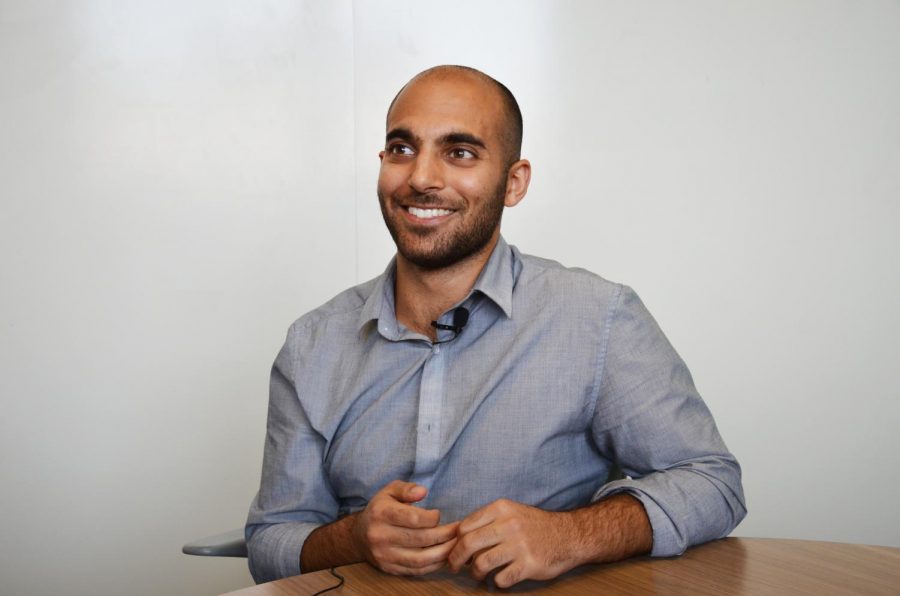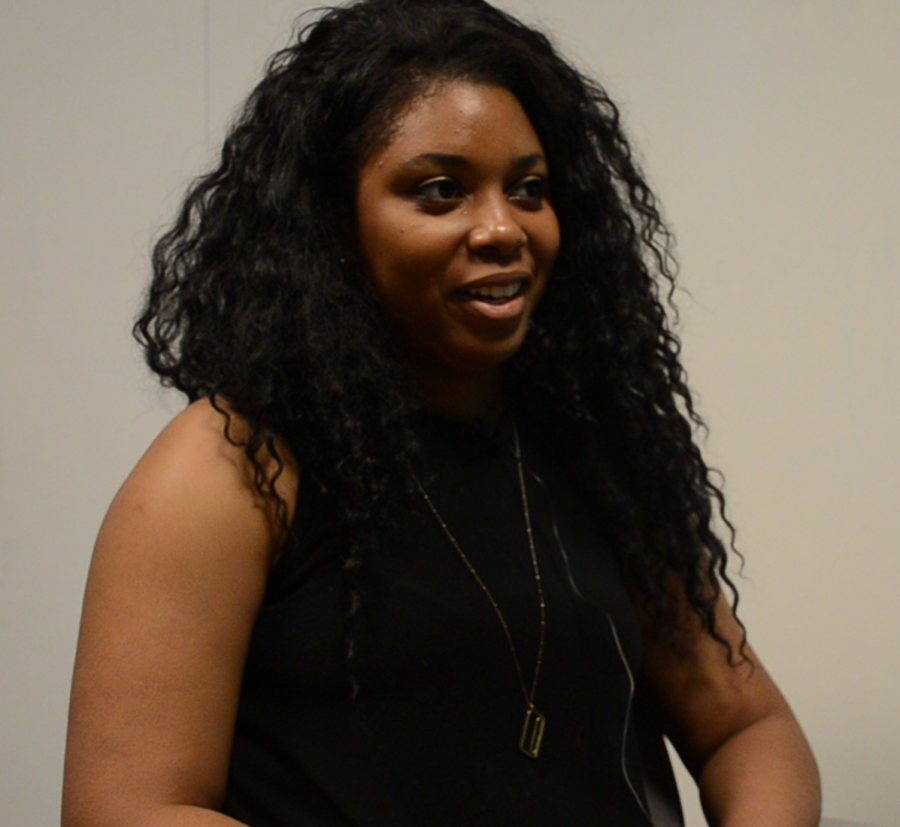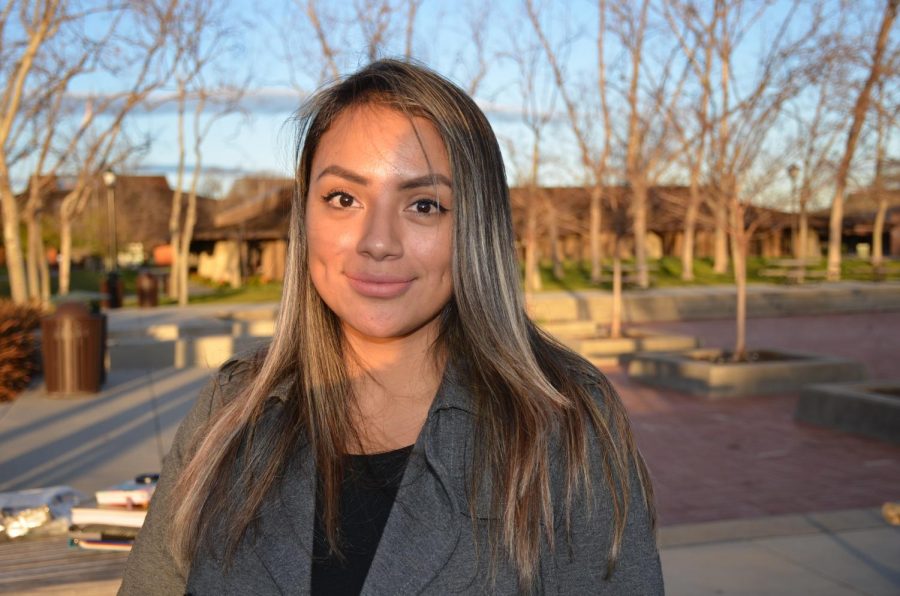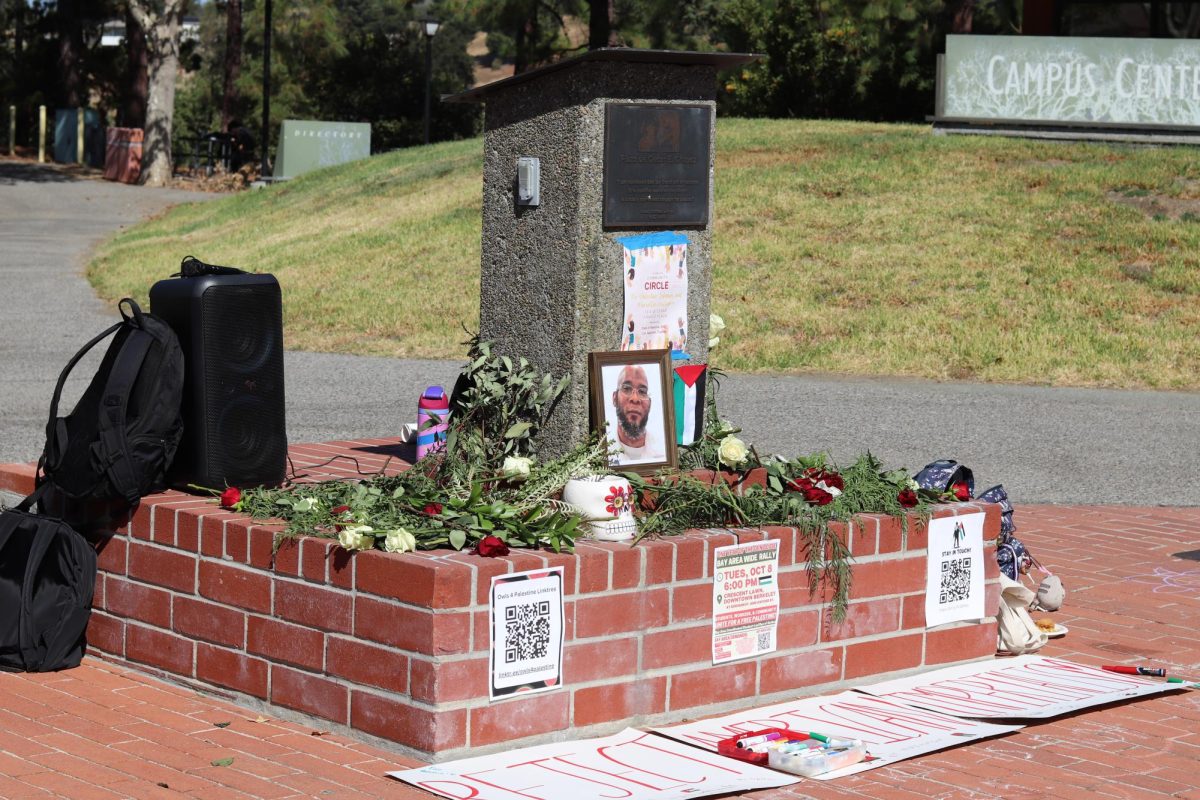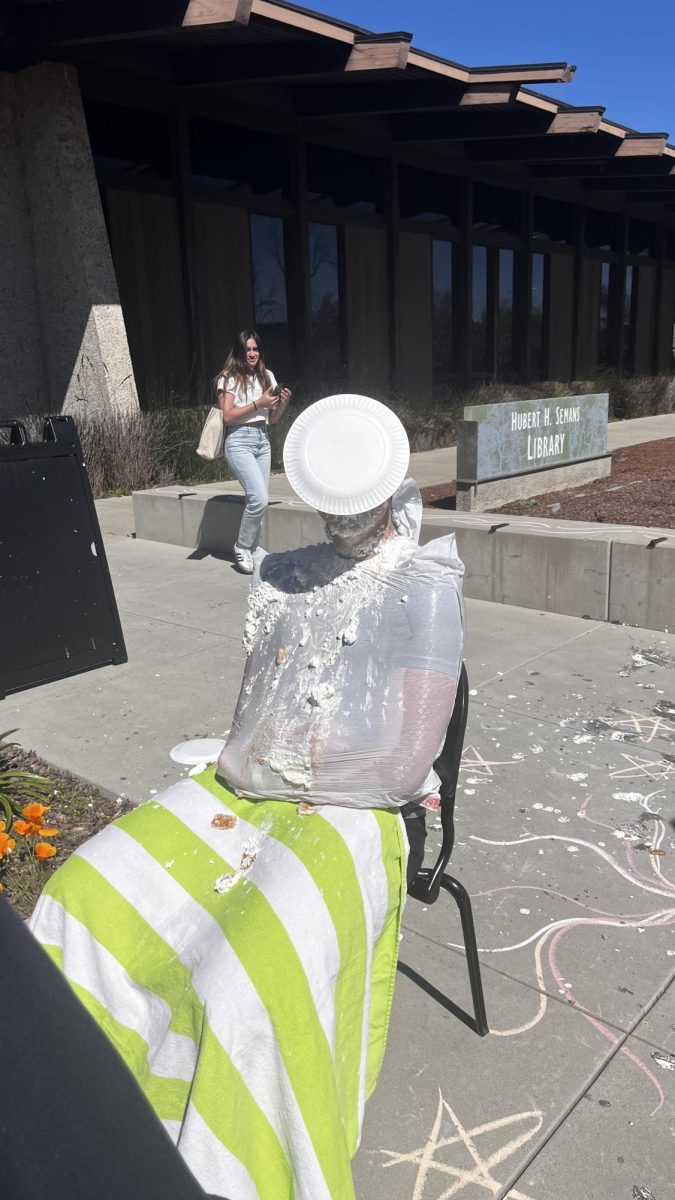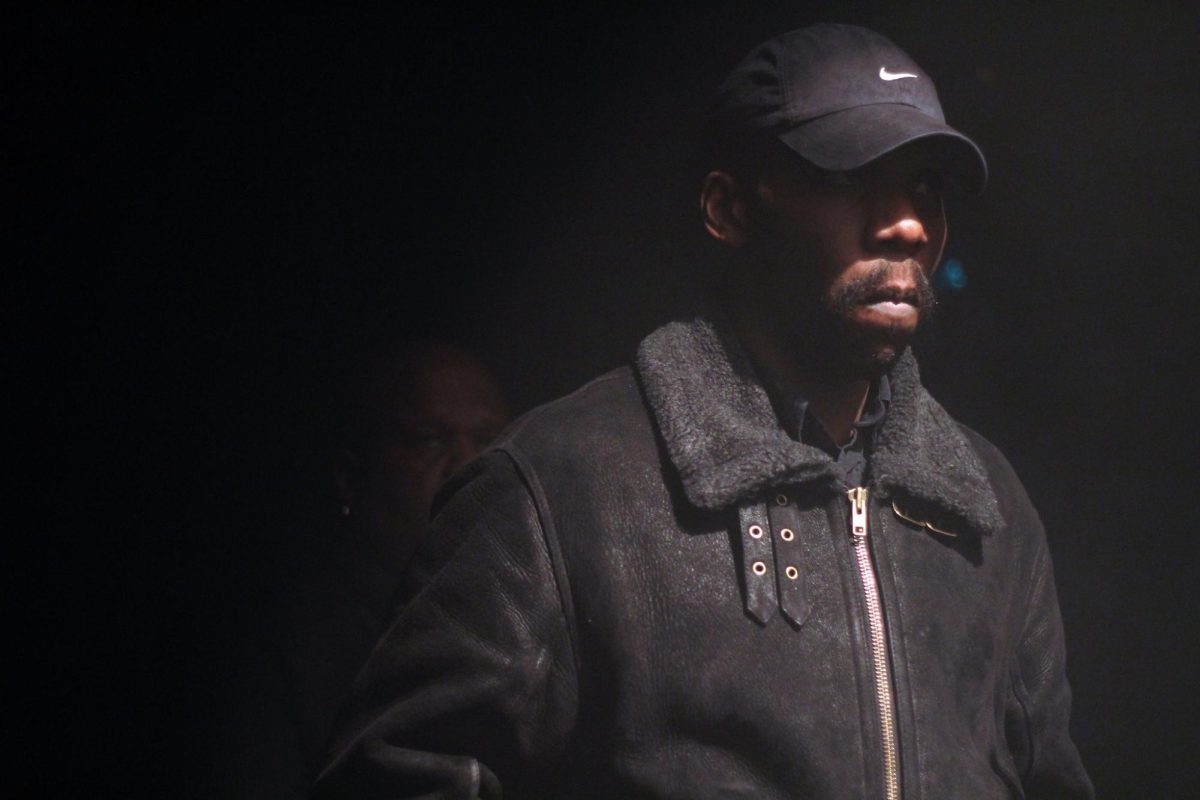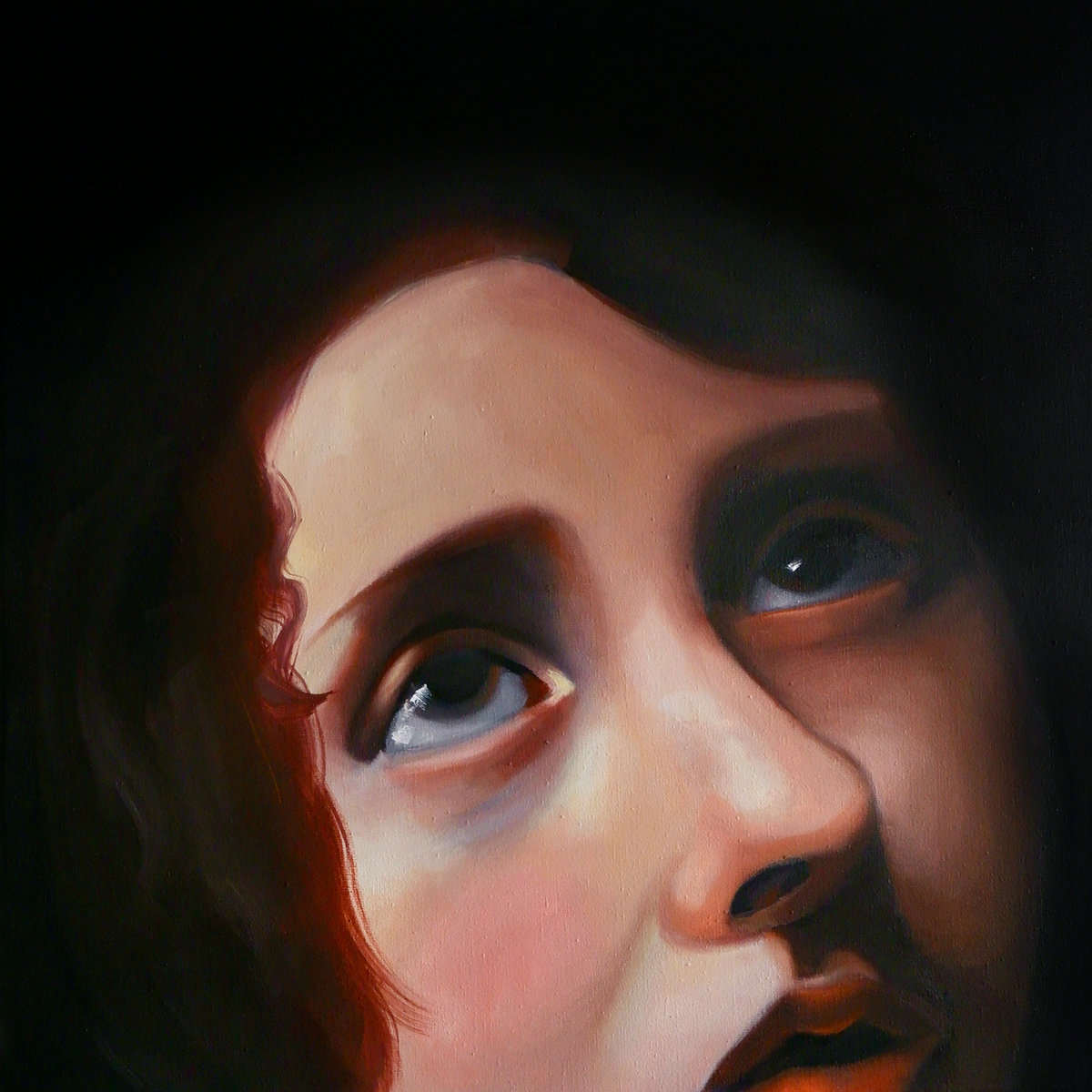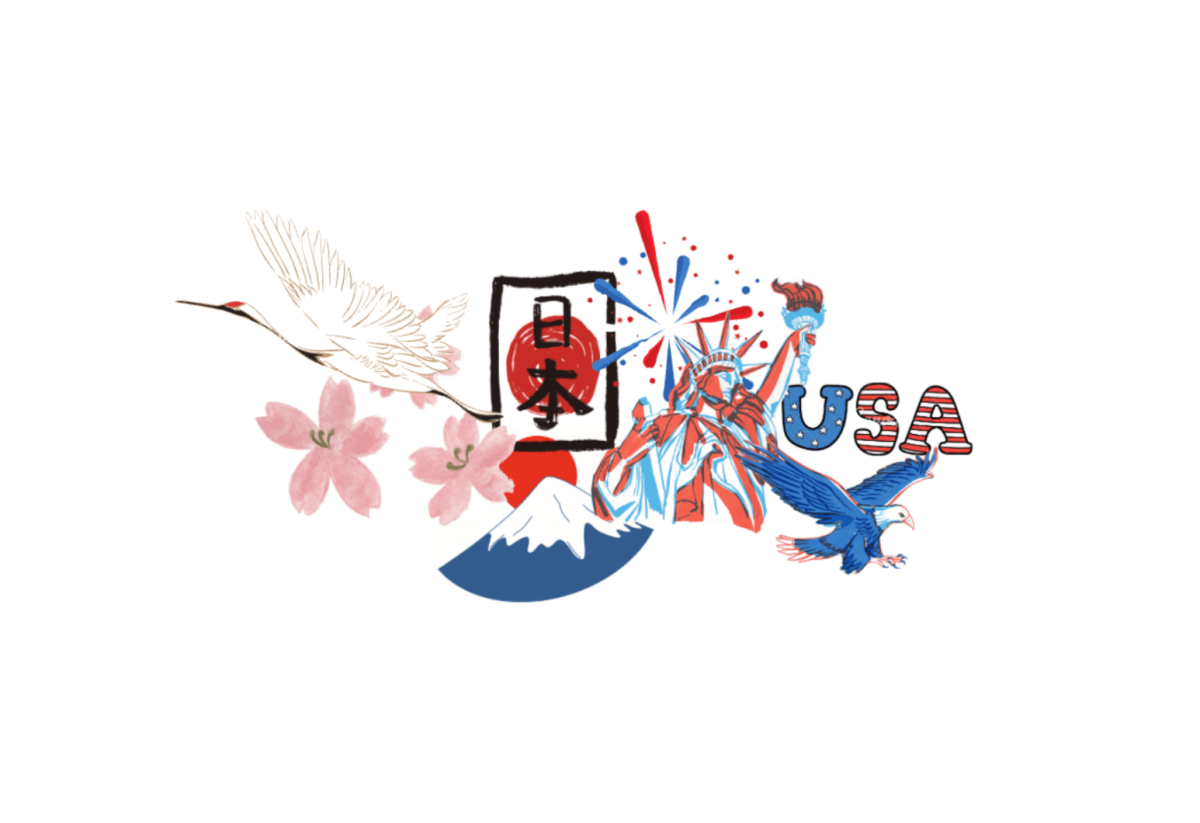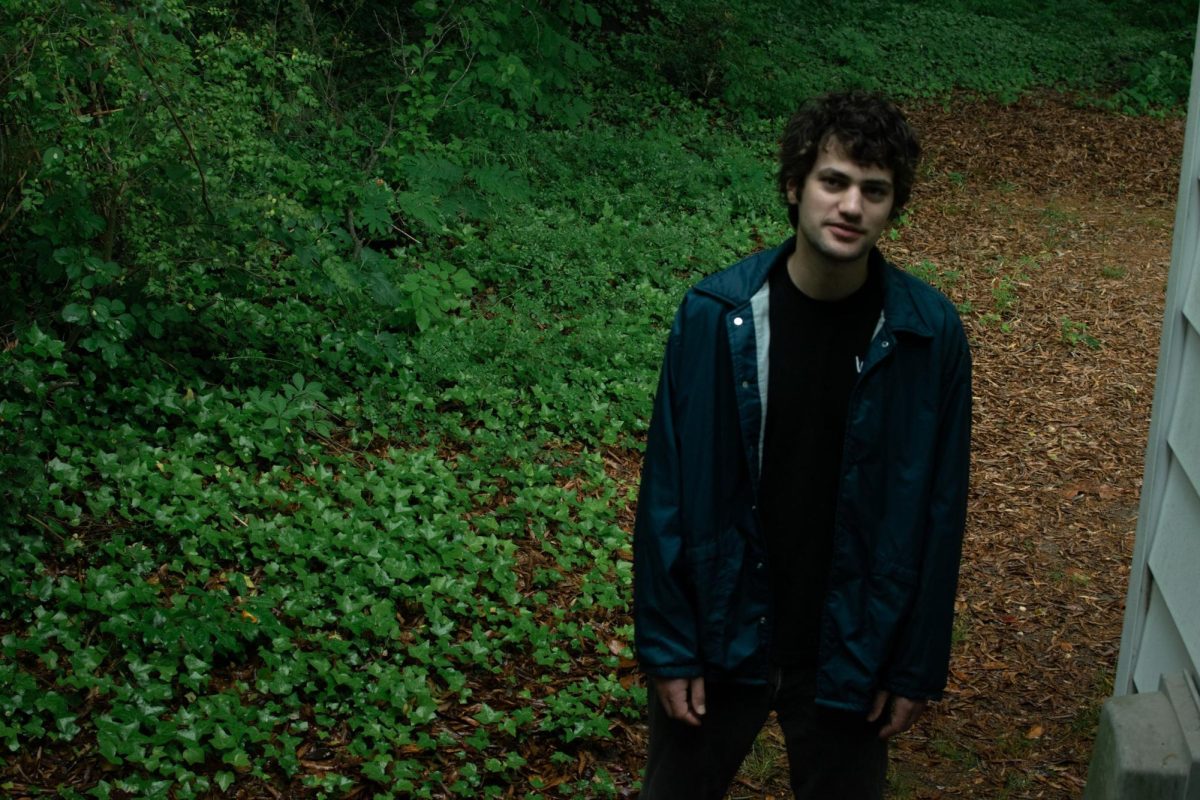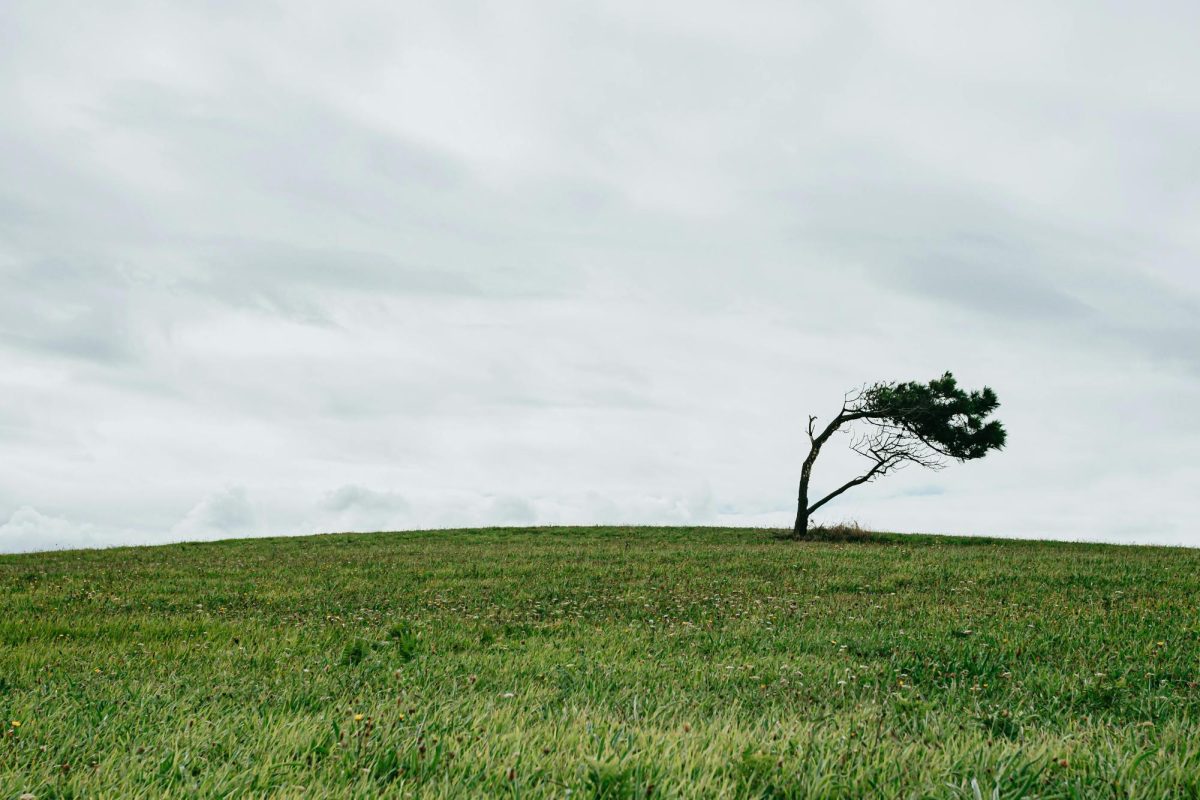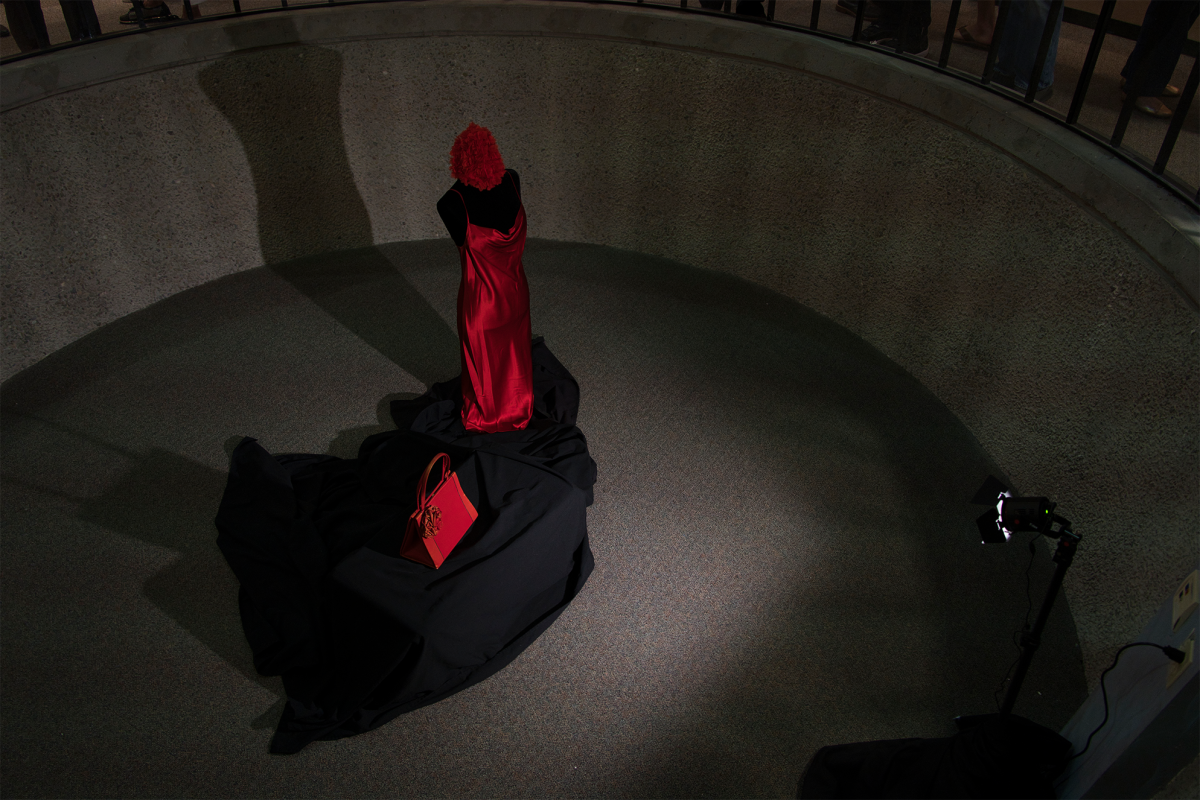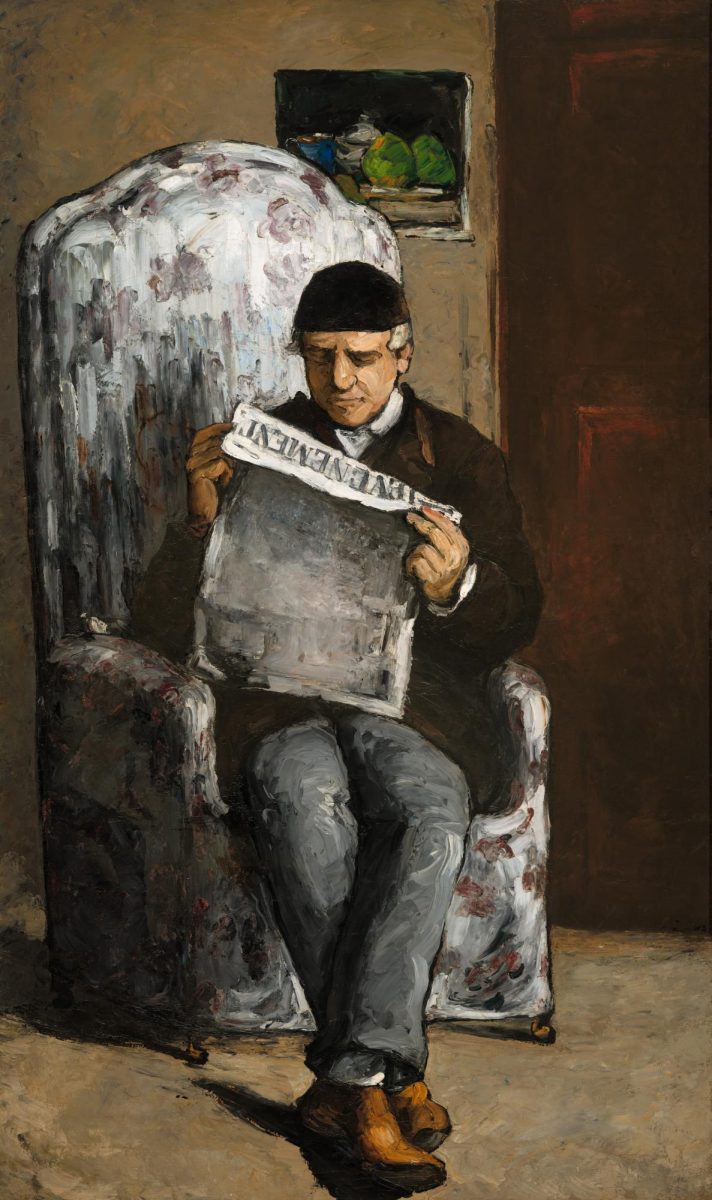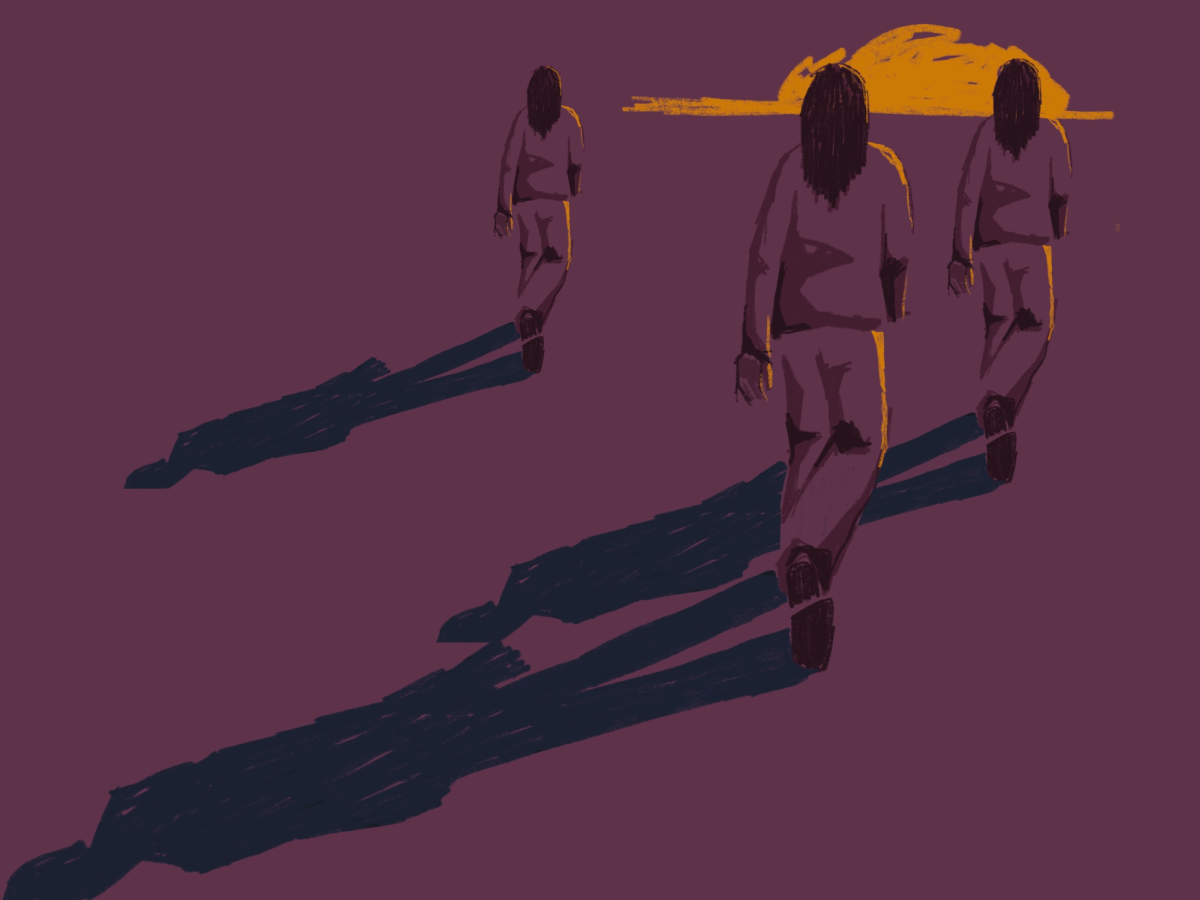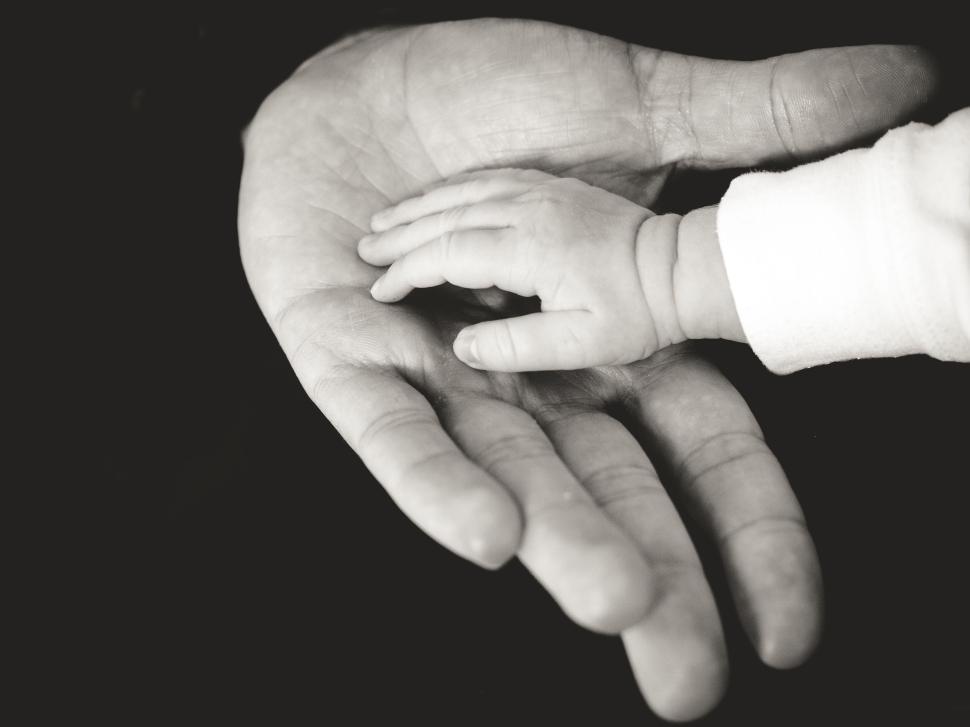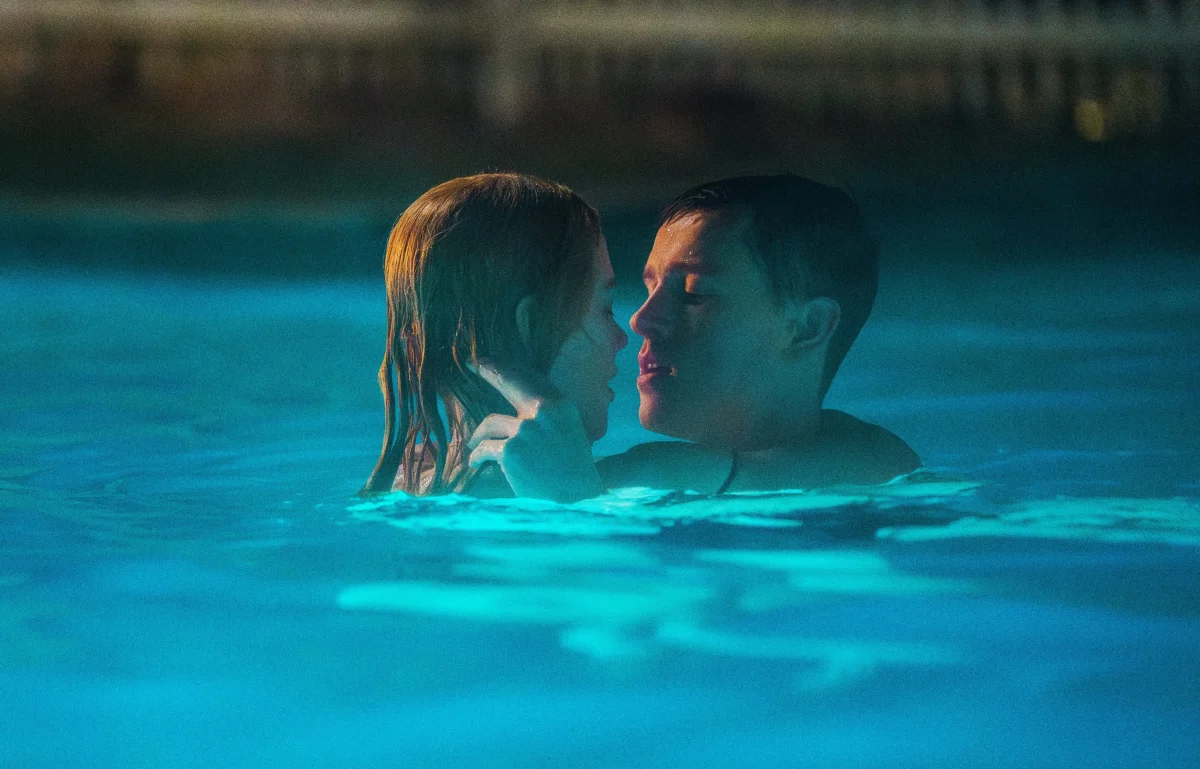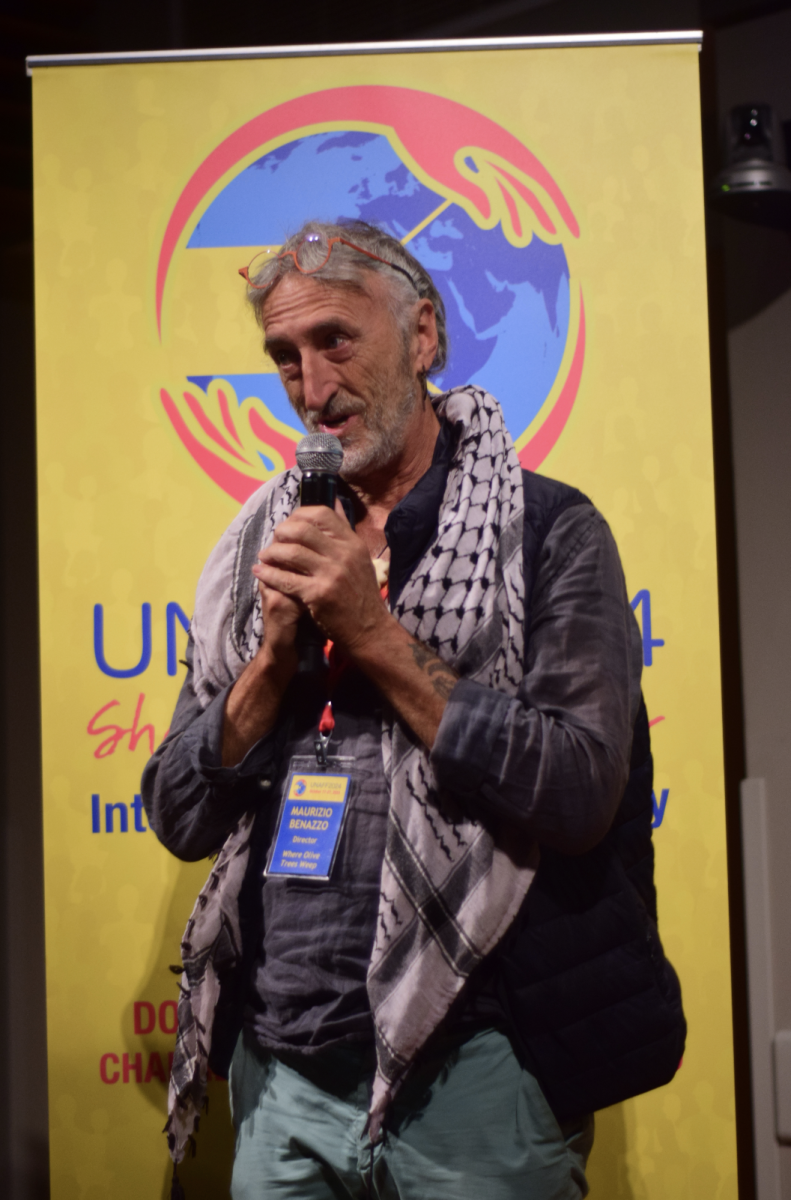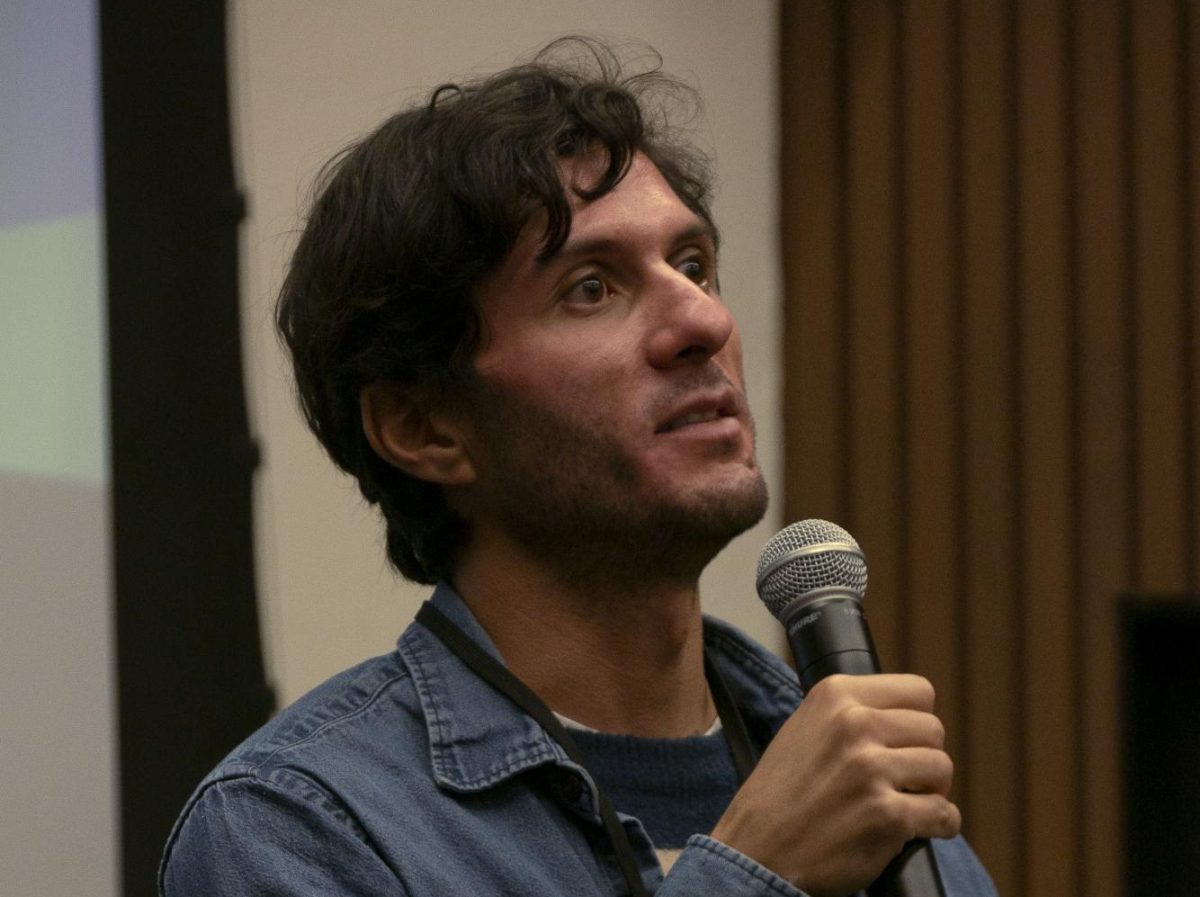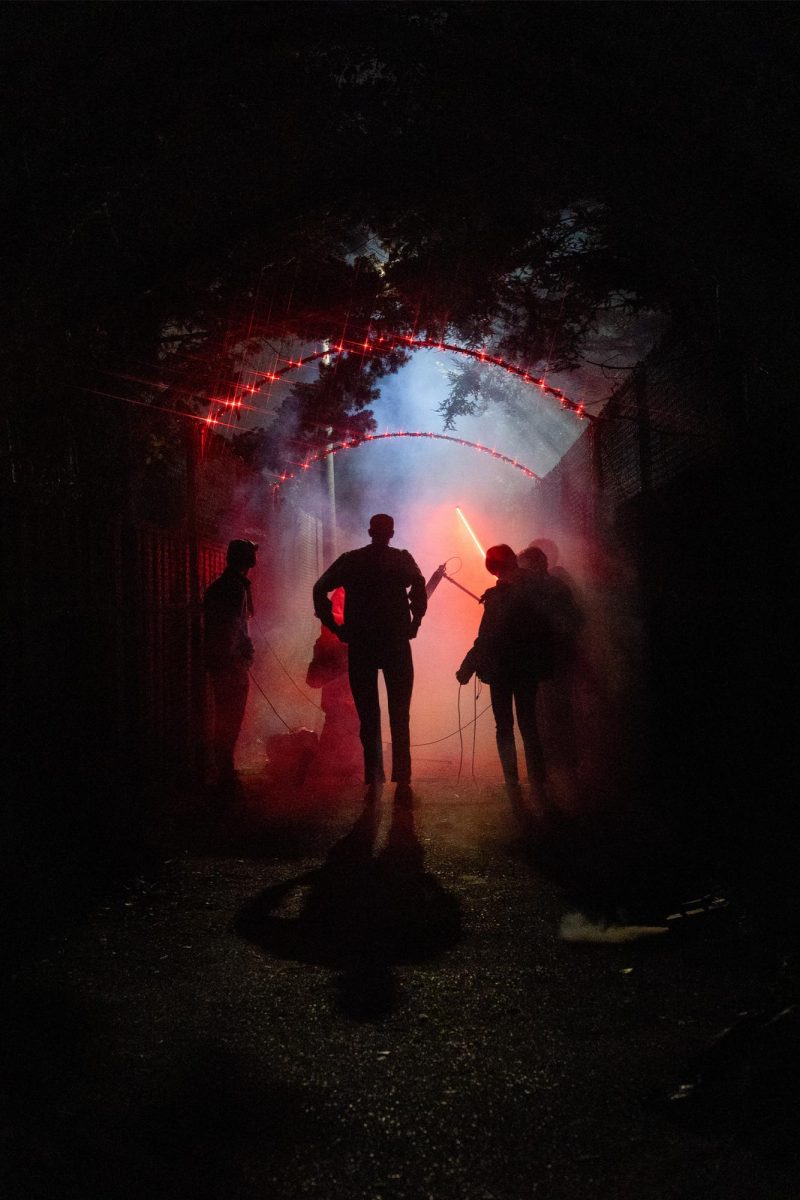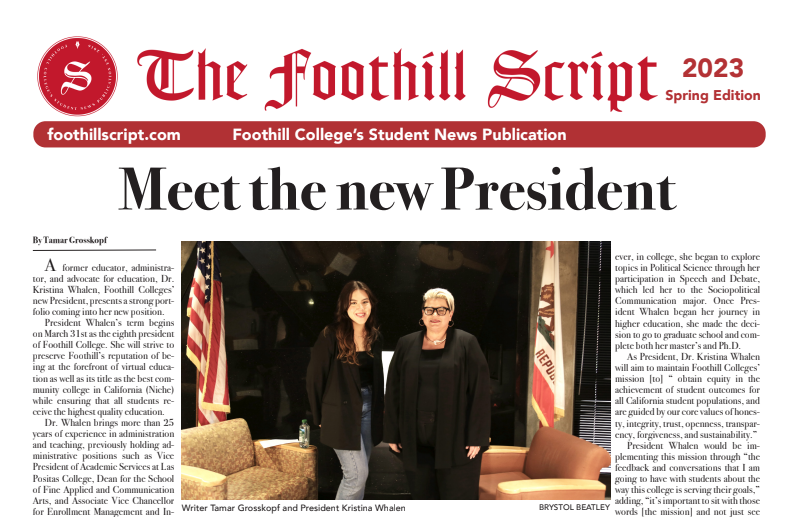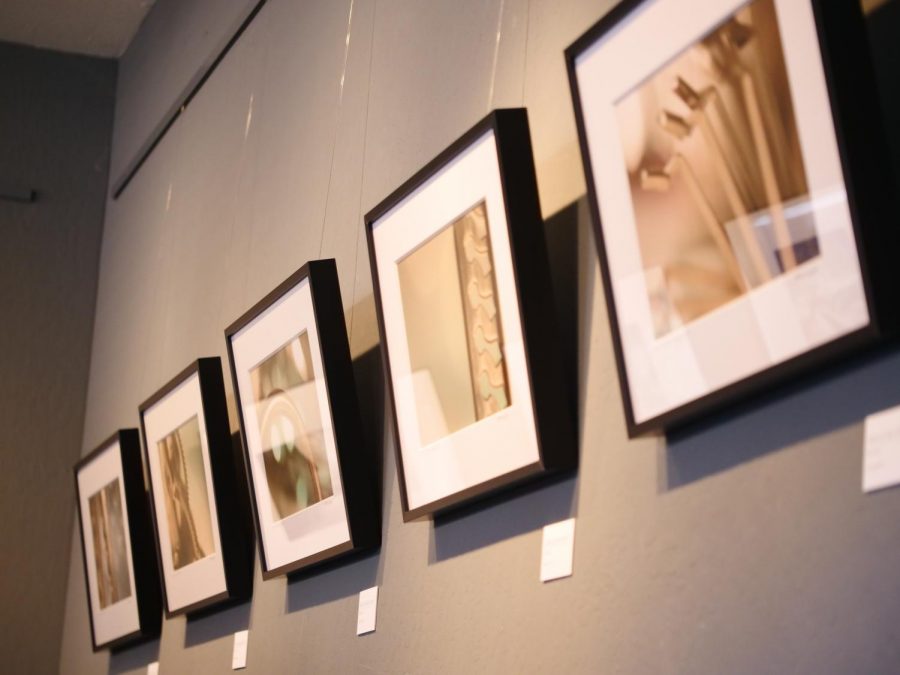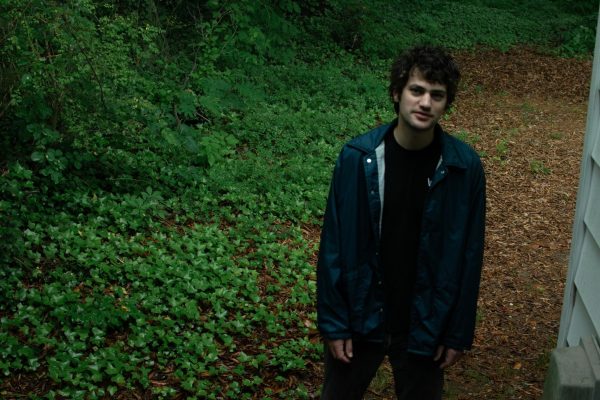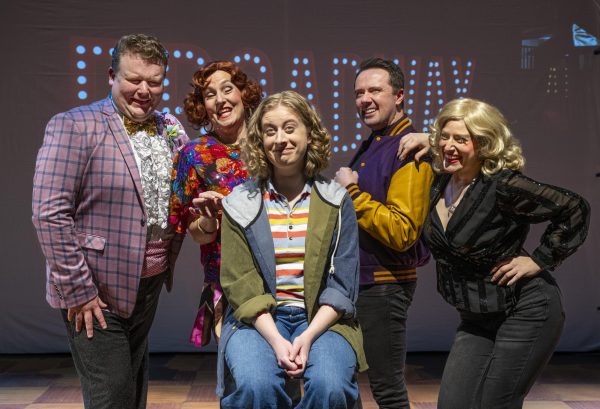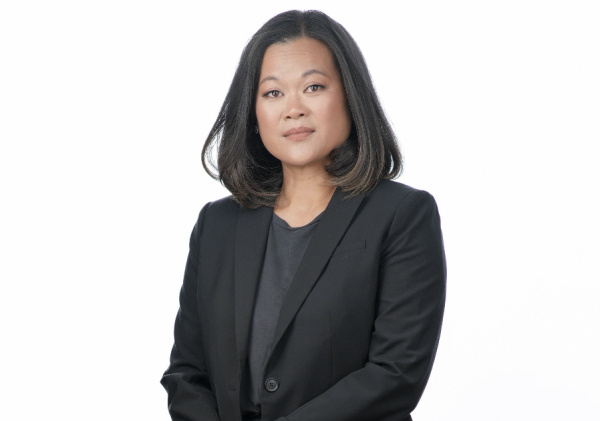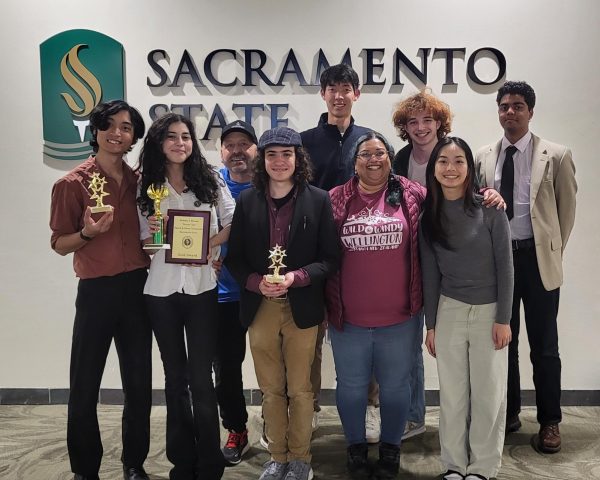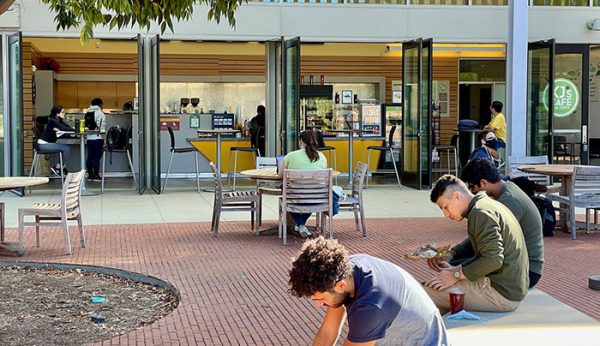Four Photographers, Four Philosophies
One of the four displays that were featured in the Foothill photography reception on Saturday January 13. The display will remain open through the end of March.
While some departments celebrate at the end of the quarter, the photography department at Foothill College has begun their celebration in the quarter’s first week by featuring the work of four photographers: Adrian Tsim, Karen Carmen, Nicole Wemyss, and Curtis Finger. Adrian Tsim, the mastermind behind the exhibition, explained that its main intention was to simply promote the photography department with hopes of garnering attention from students that may want to explore the classes offered. Additionally, the exhibition offers a platform for the four photographers to express their art and convey their message through photographs.
While there was no specific theme for this exhibition, each photographer’s distinct style genuinely captured their own philosophy when it comes to both photography and life through their lenses.
“Outsider looking in. I feel that way. Being Asian, being different.”
Former painter and graphic designer Adrian Tsim showcased his five black and white photographs taken in downtown Los Altos. Titled Outside Looking In, Tsim explained that his photographs show how it feels to be on the outside and peering into someone’s life. Having no individual in any of his photographs is one of Tsim’s modus operandi, and a sense of solitude resonates in his images. Tsim believes that his “artistic success” remains within these semi-translucent works. His photograph of a furniture shop from the outside is one of many examples.
“You see a bit of what’s in there, but not really,” Tsim said.
There are times when Tsim feels that western culture is inaccessible from his point of view. However, he also believes he has the chance to see things in a new perspective.
“All my pictures are autobiographical,” Tsim said. “It’s about me, but in a way it’s also how I see things. Even if it’s just a bench or a window.”
“Follow the light”
Karen Carmen is a second-year Foothill student in the process of finishing her Associate of Arts degree in Photography. Carmen’s work features five photographs of specific objects, all of which are taken at a 500 acre farm in a remote area of Australia. Carmen’s striking photographs of the abandoned farm give a glimpse of the remnants, family, and traditions that used to reside in the farm.
Whether it is with color photography or black and white, Carmen believes in “following the light”.
“You have to train yourself to see the light as much as you can and what is actually in front of you,” Carmen said.
The blue sky, the golden grass, and the red earth created strong contrast and immediately drew Carmen in, leaving her no choice but to take out her camera. While some might not see the farm as photogenic, Carmen admits that “it’s such a joy to capture what’s left there.” She also credits her stunning photographs to the classes she takes at Foothill.
“The classes have been very small, so you get individual attention,” Carmen said. “Whereas if you would take [photography] at a bigger institute, you wouldn’t get that kind of attention.” In the future, she admits that she would like to do more exhibitions on a larger scale and hopes to start her photography business this year.
“The uniqueness in everyday objects”
Nicole Wemyss, a Foothill photography student, features five photographs of five different objects. Her love for macro and abstract photography is visible through the bokeh in all five of her photographs.
“With different apertures — when you have one specific thing in focus — all the things in the back go out of focus,” Wemyss said.
Even after looking at the photographs multiple times, visitors might still not guess that her pictures actually consist of everyday objects like the handle of a butterfly knife, or an absinthe spoon.
“You can do really rare [things] with random objects,” Wemyss said.
While looking at her photograph of a gear, Wemyss became nostalgic as she remembered how she first fell in love with the world of photography. The former engineering major admits that she took a photography class to simply fulfill the fine arts requirement, but ended up enjoying it more than she had expected.
“I took a photo course with Keith Lee and started to get stuck from there,” Wemyss said. “The engineering stuff is still here. I like the odd objects and the gears,” Wemyss recounted, laughing.
“The more you do it. The better you get with it. The easier it becomes.”
Curtis Finger, architectural photographer and lab manager at Foothill, creates photographs that take an unorthodox approach, encouraging him to get outside his comfort zone. His collection In Search of Light consists of shots taken in Tahoe, Sakoya and Kentucky. For Curtis, these landscape photographs are about “exploring, going out to nature and seeing different things.”
“Whenever I go out, I have an idea of what I’m going to get, but I’m not 100% certain how it’s gonna interpret on the image,” Finger said.
He points out to a photograph titled Magic Well. While the photograph looks like a well surrounded by snow, Finger explains that it is actually the green grass reacting with infrared that makes it appear white. His images, taken using an infrared camera, show landscapes that looks different to the human eye.
“You are learning about an art and when you are learning about an art, it gives you a reason to learn just about anything,” Finger said about his experience learning the art form.
He emphasizes on capturing as much as one can outside their comfort zone and, eventually, turning it into a way of life.
“I’m always out when exploring these areas and thinking ‘what else can I do?’” Finger said.
Coming all the way from Wisconsin to Foothill College in 1997, Finger explains, “I fell in love with the department. Everyone is very different. I always find like whatever I want to photograph I can always find people to help me, mentor me. I’ve seen a handful of photo schools and none of them compared to here. Between the facilities and the teachers, it’s a no-brainer.”
The series of snapshots taken by the four photographers are up on display in Room 6104 and can be visited through the end of March. Visitors are encouraged to take a look, get inspired, and see how philosophies translate into a series of photographs.





